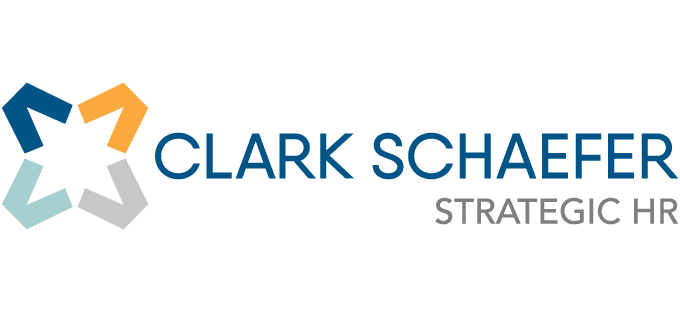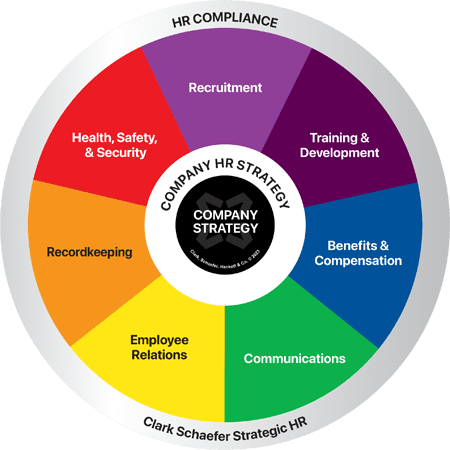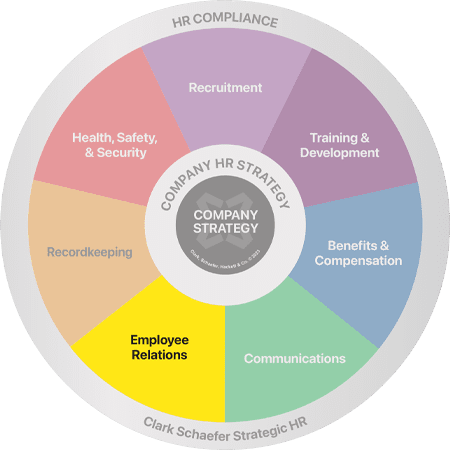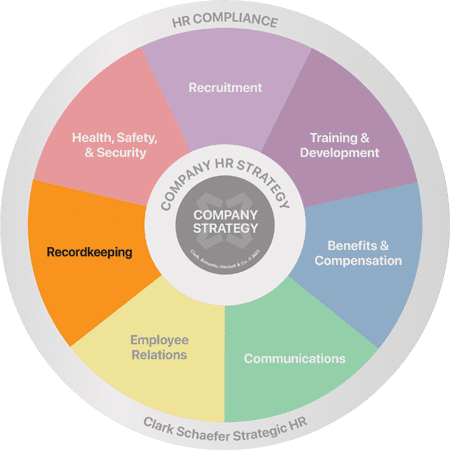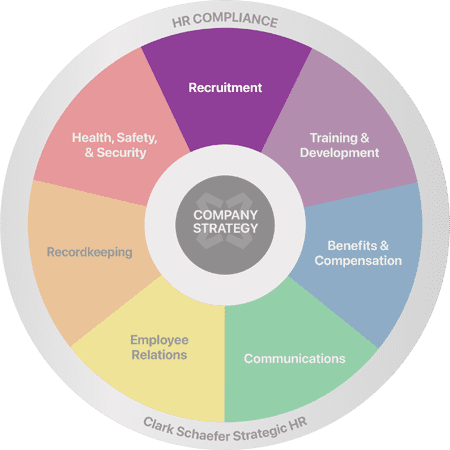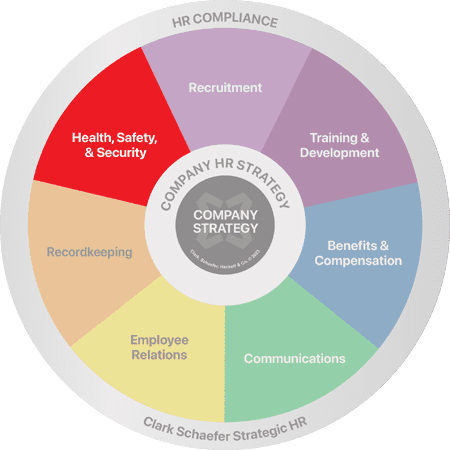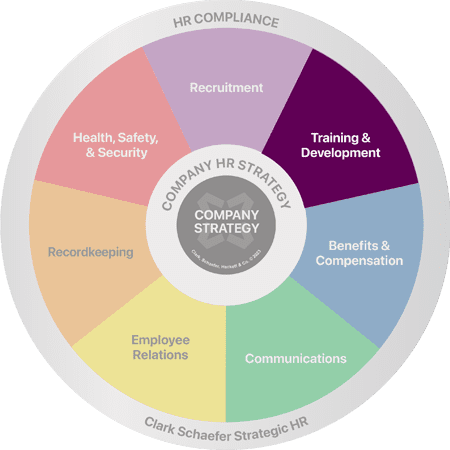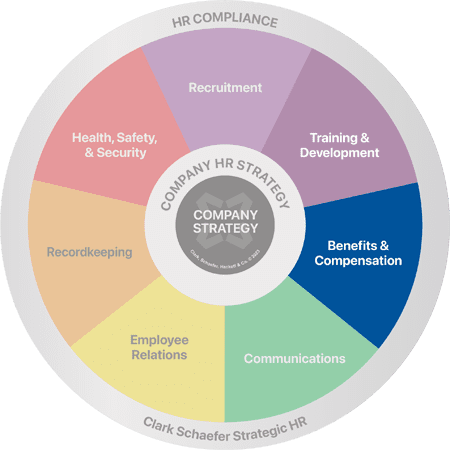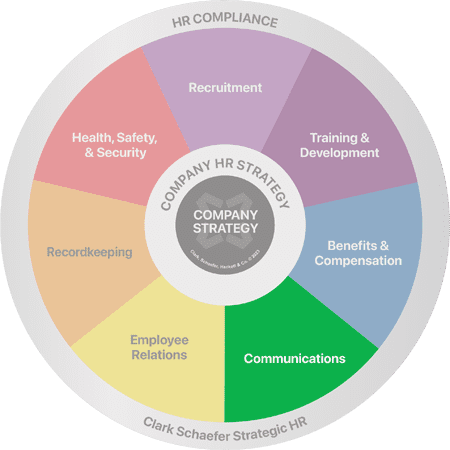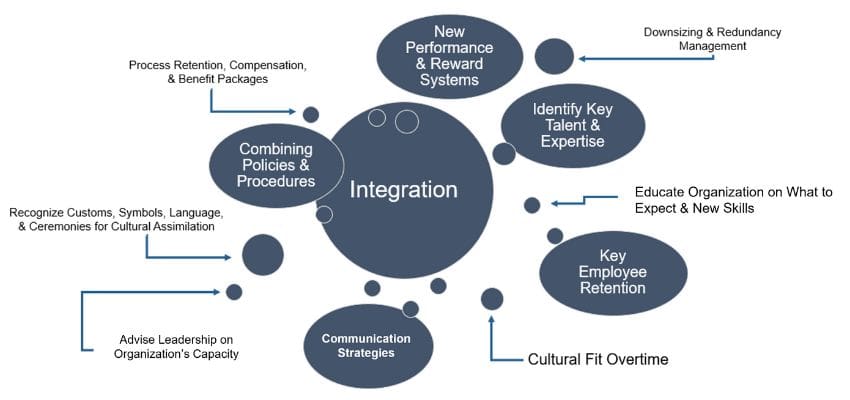Posts
Conflict Management Strategies To Help Employees Work Together
Last Updatedin Employee Relations, Videos Question of the Week, Video
With the help of a few good tactics and a great HR partner, it is possible to address conflict in work relationships and help employees find functional strategies for moving forward and working well together.
Civility in the Workplace
Last Updatedin Employee Relations, Videos Question of the Week, Video
The Top Seven Handbook Policies to Include This Year
Last Updatedin HR Compliance, HR Strategy Question of the Week
What Questions Should I Ask During An Exit Interview?
Last Updatedin Employee Relations Question of the Week

HR Question:
We’ve decided to start conducting exit interviews but aren’t sure of the right questions to ask. What are some key questions to ask during an exit interview?
HR Answer:
Exit interviews are an important part of the employee life cycle. These interviews, conducted after an employee has formally turned in their resignation and is in their last few days of employment with your organization, allow you to get feedback to examine and potentially improve processes, expectations, and experiences within the company. While typically conducted with an employee who is leaving on their own terms for another opportunity, you can also conduct exit interviews with those employees who are relocating, retiring, or leaving for personal reasons.
Take the time to discuss topics such as pay and benefits, team culture and expectations, and reasons why someone may have felt prompted to search for opportunities elsewhere. The answers to these questions can help you develop strategies for your HR processes. Plus, this feedback is critical to reducing turnover and creating an environment your employees want to work for. You can’t fix what you don’t know, and you won’t know unless you ask. Preparing ahead of time can allow you to ask focused questions that will lead to the necessary answers.
How to prepare for an Exit Interview
The first step in conducting an effective exit interview is to ask yourself what you are hoping to accomplish by talking to the exiting employee. Are there areas or blind spots that they may be able to shed light on or provide additional insight into? This opportunity will allow you to gather feedback that current and remaining employees may be too hesitant to share.
You may have some suspicions as to the underlying reason(s) for employees’ departures, so this can be an opportunity to test out your hypotheses. For example, you may be concerned that your salary ranges are not up to date with your market and industry, and you are lagging behind your competitors. Or is the employee leaving because of a manager, supervisor, or co-worker? Do you want to look at your culture to see if it promotes teamwork, accountability, and appreciation?
Additionally, be prepared to see the organization through this individual’s lens. They may not have had the best experience, or perhaps they felt consistently frustrated by certain elements. As a result, be prepared to listen to their feedback (and potential negative approach) with an impartial ear and an eye looking for potential opportunities for improvement.
What questions should I ask?
After determining the why, start creating questions that will get you the information you are seeking. Of course, there are many questions that you could ask, so we recommend you identify a set of questions that can be discussed in a reasonable amount of time. Here are some suggestions:
- Were you looking for a job (and if so, what made you decide to start looking)?
Because of the current job market, many employers pursue passive job seekers and provide the employee with a terrific employment opportunity. If the individual was actively applying for new roles, this might help get to the root of why they wanted to leave. - What caused you to accept the position?
This is where the interviewer can get to a key differentiator between their organization and their competition. More pay, better benefits, remote work, work culture, toxic manager, etc. may be reasons why the offer made couldn’t be refused. - Did your manager meet your expectations for providing appropriate direction, support, and leadership?
It is often said that people leave a manager, not a job. If their expectations weren’t met, ask probing questions to understand why. This can shed light on any supervision and leadership issues that may need to be addressed. - How can our company improve our training and/or onboarding process?
For those newer to your company, this question allows you to determine how the employee felt about their first few months in your organization and if they feel they received sufficient training to do their job. If the employee has been with your organization for a longer time period, be sure to clarify that their suggestions can also come from their experience or role in training and onboarding processes as well. - What, if anything, would you have changed about your job?
A good follow-up question to this one is “if that change were implemented, would you return to work here?” Again, this question can get to the root cause of the turnover, and if the departing employee feels strongly enough about the company to consider returning at a future time. Remember that boomerang employees can be an asset to your organization as they can return re-energized and more engaged, so keep that door open when it’s appropriate to do so. - Would you refer a friend or family member to work here?
This question can give you additional information about the culture of the organization. If the answer is “yes, but not in my department,” follow-up questions may again reveal issues that should be addressed.
For additional areas to probe, Glassdoor provides more exit interview questions to consider.
What to do after an Exit Interview
After the exit interview, consider how you will use the data. Are you sharing it with the managers or leadership team, or are you checking the exit interview off your list and storing the information? Look for themes, especially if there is increasing turnover in one department or position. For example, are all of your customer service representatives leaving because they didn’t feel as though they were trained appropriately? Do your departing IT professionals complain about a lack of support from their manager? Use the data from exit interviews to create action plans to address issues and concerns.
Exit interviews can be used as a great tool to target turnover and retention issues. An effective exit interview is also valuable in pinpointing management and cultural challenges in an organization if the data is used appropriately. An alternate strategy is to open lines of communication with employees before they leave by conducting employee surveys or implementing stay interviews to identify and address issues before they choose to exit.
Thank you to Sheryl Fleming, MA, SHRM-SCP, for contributing to this HR Question of the Week.
Do you know why your employees choose to leave your organization? Exit interviews, while time-consuming, can be key tools for better understanding your company’s retention opportunities. Our team at Strategic HR can help you construct and conduct stay and exit interviews to learn more about why employees stay or go. Visit our Employee Relations page or Contact Us to learn how we can lend a hand in your employee retention efforts.
Specific Ways HR Can Cultivate an Inclusive Workplace
Last Updatedin Employee Relations Question of the Week
HR Question:
We’re celebrating the last full week of Black History month, and we want to keep the conversation going. How can our HR department cultivate a more inclusive environment beyond Black History Month?
HR Answer:
While the month of February inspires us to celebrate the successes and recognize the struggles of Black and African American individuals across the US, this focus and spotlight do not have to (and we’d argue should not) be limited to four weeks out of the year. In “The Diversity and Inclusion Revolution,” one of the eight truths the Deloitte Review focuses on is that to create a diverse and welcoming workplace, organizations have to “perform a culture reset, not a tick-the-box program.” Celebrating the work and contributions of Black Americans during one month is not enough to build a diverse culture – rather, it can contribute to a continuous, inclusive facet of a larger and ongoing conversation; one that includes a wide range of abilities, identities, ethnicities, races, and genders.
Studies have shown that increasing the diversity of teams and leadership leads to increased innovation. Additionally, it’s no secret that diverse, inclusive, and equitable workplaces see higher than average financial performance as well. It is easy to see why cultivating an inclusive workplace is not only the right thing to do; it is also a smart business decision. So as you look for ways for HR to continue to nurture and grow a more inclusive environment beyond February, we offer the following suggestions.
Embrace 3 Pillars of Diversity and Inclusion
After studying the most productive workplaces around the world, Gallup identified three requirements for a diverse and inclusive workplace culture:
- Employees are treated with respect
- Employees are valued for their strengths
- Leaders do what is right
By viewing diversity and inclusion through a broader lens as Gallup has, it opens the door for everyone to see how they can play a role. It’s naturally HR’s role to facilitate open conversations amongst employees, managers, and executives, including facilitating eye-opening and bridge-building conversations about how to understand and respect one another’s differences and the value that these differences can bring to our professional and personal lives.
In addition to having meaningful conversations that foster a respectful and inclusive environment, we recommend that you review your employee handbook to ensure that your policies and practices fully support diversity and inclusion in your organization. For example, do you have a clear path for employees to go to HR should they have concerns about the inclusivity of their workplace?
Provide Training that Meets Employees Where They are in the Journey
As your organization continues to foster a culture of inclusion and belonging for everyone, it’s important that your employees have the tools and common language to talk through related topics and issues together. When it comes to understanding diversity and how we can learn from one another, there is not a lack of potential training and development experiences. No matter where your employees are on this journey, it is important to continue to provide education and opportunities for growth. If you don’t feel that you are best equipped to educate employees on the subject matter, you may feel inclined to bring in a reputable speaker or training facilitator to optimize the experience.
Look for Ways to Foster a Sense of Belonging
There are many ways that HR can be purposeful in cultivating an inclusive culture. You can look for opportunities throughout the year to recognize important dates or impactful cultural events and help employees to celebrate them. For example, Juneteenth was recognized as a federal holiday beginning in 2021 – does your organization have plans to celebrate, recognize, or highlight the holiday? Can your employees take time off through established or floating holidays without utilizing their PTO in order to celebrate?
With the goal of creating an inclusive environment, consider providing forums and welcoming spaces for members of various affinity communities to exchange ideas, find mentorships, encourage a sense of belonging, and network. These groups could range from different ethnic and cultural backgrounds to LGBTQIA2S+, women, young and emerging professionals, and more. For example, look to GE’s Employee Resource Groups, which exist for the purpose of welcoming “all employees to learn, connect, advocate, and foster a sense of belonging.”
Get Involved in Your Local Community
As the Deloitte Review emphasized, “match the inside and the outside.” Internal efforts to continue the conversations emphasized during Black History month or other diversity and inclusion initiatives can be more effective when matched with external efforts to make a difference in your local community. Look for outside opportunities through community action groups or nonprofit organizations. You could also consider paying employees for their time and efforts contributing to a more inclusive and welcoming society.
As we mentioned, there are countless ways that HR can cultivate an inclusive workplace, so we hope that these suggestions inspire even more ideas for how you can nurture diversity, equity, inclusion, and belonging in your organization.
Thank you to Mary Mitchell, MBA, SPHR, CHRS; Melinda Canino, MS; and Samantha Osborne Kelly for contributing to this edition of our HR Question of the Week.
Having an inclusive organizational culture that contributes to your organization’s overall success doesn’t happen by accident. It needs to be nurtured. Learn how we can help you to nurture your culture through our DEIB Consulting Services, or contact us today.
Six Key Leadership Attributes for Your Leadership Development Plan
Last Updatedin HR Strategy Question of the Week
What Should I Include in the First 90-Day Introductory Period?
Last Updatedin Recruitment Question of the Week
How Can I Support Employee Well-Being Beyond the EAP?
Last Updatedin Employee Relations, Health, Safety & Security Question of the Week

HR Question:
Our HR team is exploring ways we can support employee well-being in addition to offering an EAP. What should we consider in our approach?
HR Answer:
While many organizations have implemented an Employee Assistance Program (EAP) as an important way to support their employees’ mental health, that is only one component of well-being. There are many ways HR can play a direct role in supporting employees’ overall well-being. In this article, we’ll discuss what well-being is, how it impacts individuals and organizations, and offer specific examples of how you can support employee well-being in your organization.
What is well-being?
Well-being is the holistic state of an individual’s physical, mental, social, spiritual, and financial health as well as a sense of career and community. It can include things such as work-life balance, stress, job satisfaction, and financial confidence, just to name a few. Essentially, it’s what makes humans human.
A common misconception is that wellness and well-being are the same thing, however, they are not. Wellness is one component of a person’s overall health, while well-being encompasses all aspects of a person’s health factoring in mind, body, and spirit.
Can employee well-being impact your bottom line? (Spoiler: Yes!)
In addition to promoting the fundamental principle of valuing your employees, there is evidence demonstrating the advantages of enhancing employee well-being. Employers that focus on their employees’ overall well-being see the results not only directly with their employees, but in business outcomes.
According to research from the McKinsey Health Institute and the World Economic Forum, employers that take steps to nurture employee health and well-being experience decreased turnover and absenteeism, heightened employee engagement, increased profitability, elevated productivity, enhanced safety, and lower healthcare costs.
The results are clear – physical, mental, social, and spiritual well-being are inextricably linked to work, productivity, and performance. Investing in employee health and well-being can be seen as both an ethical obligation and a smart strategic business decision.
What can employers do to support employee well-being?
There are a number of resources that employers can lean into to enhance their employees’ overall health. Some ideas on how you can support your team include:
Consider all areas of well-being.
Many employers encourage physical fitness and offer ways to stay physically fit (i.e., company-wide step challenges, company-sponsored 5K teams, etc.). However, it’s important to think beyond that to promote other areas such as mental, social, and financial health. If you’re not sure what’s important to your team, consider conducting an employee pulse survey to help you make informed decisions on what your employees will value most.
Be aware of gaps and those disproportionately impacted.
Well-being is not a one-size-fits-all scenario. The Great Place to Work Well Being Survey Report provides key insights looking at differences in well-being across different demographic groups, including gender, age, ethnicity, and job level. You may find that it could be beneficial to offer extra support for some subsets of your staff.
Look at what others are doing!
Why recreate the wheel when you don’t need to? Check out these examples of well-being programs being offered by the Fortune 100 Best Companies to Work For. Even if you don’t choose to offer the same programs, learning what is working well for other companies can sometimes inspire ideas that will work for your organization.
Expand your benefits offerings.
How do your current benefits support well-being? If this is an opportunity for improvement, consider adding options such as paid time off, flexible work arrangements, employee assistance programs, financial advisory services, and well-being initiatives. Of course, offering them is not enough, it is also critical to have a solid HR communication plan in place to ensure employees are aware of these benefits and to eliminate any hurdles to using them.
Create a culture of care.
Offer programs and opportunities that build camaraderie, encourage acts of kindness and connection, encourage communication, and workplace civility. Many organizations have found company-supported community involvement activities to be a great way for their teams to not only feel good about doing good in their communities, but it also allows for them to spend meaningful time together. Consider offering volunteer time off (VTO) to alleviate any financial barriers to participation.
Consider low-cost, high-impact options.
Remember there are actions you can take that don’t need to break the bank. Look for low and no-cost ways to support employee well-being. For example, you can support healthy work-life balance with a simple, yet significant statement in your email signature, such as “Please know we work flexibly in our organization. If you receive this message outside of your normal work hours, no response is expected until your next planned work day.” This sends a powerful message about how your organization values work-life balance.
Prioritizing Employee Health
The costs of employee well-being are too high not to pay attention. Regardless of the action your organization chooses to take, it’s important to remember that work and personal life are not mutually exclusive. Work life influences home life and vice versa, as much as we wish it would not. Ignoring or not supporting one or the other has serious potential consequences. If you’re not sure about the best ways to leverage your financial and time resources, ask your employees. You may learn that they are willing to take cuts in pay to continue to work from home or have other well-being benefits that positively impact them, their family, and/or their lives outside of work. We have found that every effort you make to help better the lives of your employees ultimately comes back to better your organization as well.
Thank you to Patti Dunham, MBA, MA, SPHR, SHRM-SCP, Director of Business Strategy & Quality and Julie Johnson, PHR, SHRM-CP, Senior HR Business Strategist for contributing to this HR Question of the Week.
Investing in employee well-being is not just an ethical obligation, but a strategic business decision that can lead to increased productivity, engagement, and overall success. Take advantage of our comprehensive Health, Safety, and Security services to support your team’s holistic well-being and create a thriving workplace. Contact us to learn more about how we can help you prioritize employee health and well-being.
Want to improve your employee well-being?
How Can HR Play a Strategic Role in My Organization?
Last Updatedin HR Strategy Question of the Week
How Can I Get My Team More Engaged in Training?
Last Updatedin Training & Development Question of the Week
Three Ways Employers Can Promote Work-Life Balance
Last Updatedin Employee Relations Question of the Week

It’s no secret that the work environment has changed in recent years. We’ve experienced a pandemic, a labor shortage, inflation, and a contentious election, just to name a few. The recent Mercer Global Talent Trends found that more than 80% of employees are at risk of burnout. This was found to be stemming from excessive workload, financial stressors, and exhaustion.
It has become more important than ever that employers listen to and understand the motivations of their employees in order to best attract and retain them. Many employees have made changes that better support family life, financial security, and their lifestyle through flexible work situations, including flexible work options. Many are realizing that work-life balance is not a “nice to have,” but rather it is a necessity.
This and other research also found that the ability to enjoy a work-life balance ranked highly as a reason employees both join and stay at a company.
Three Ways to Promote Work-Life Balance
Each person has his or her own idea of work-life balance or work-life integration, which is another term that some use for the concept of the give and take, tug and pull between work and personal life. So how can employers meet the diverse needs and desires of their employees and achieve work-life balance, particularly if it means something different to each person? Here are three potential solutions:
1) Offer Flexible Work Options
To be competitive in today’s market, consider offering flexibility in where and when work is performed. Although this contradicts many headlines of CEOs and leaders demanding employees return to the office, many organizations are finding a hybrid approach can meet both the organization’s and the employee’s needs.
Steps to ensure success with hybrid work
A hybrid work arrangement can present unique challenges to individual and team productivity, collaboration, and success. We recommend that employers:
- Plan for and build internal supports for those who are working remotely to ensure they have the appropriate support (people and tools) and clear direction to optimally perform.
- Be purposeful with the time employees are required to be in the office. If this is a change for remote employees, provide valid reasons why their presence in person is needed. This may also require training for managers to engage employees to see the value of being in person.
- Allow some flexibility so employees have some say in when they are in the office. When employees feel they have some degree of control, versus being told, they are more likely to buy into this model.
Employers should also ensure that their policies and practices are updated to align with their efforts of supporting employee work-life balance. For example, if you offer hybrid work situations, you should formalize this through a Hybrid Work Policy that both supports the need for employees’ work-life balance and meets the demands of the business.
Offering a hybrid option allows employees and their employers to view the work-life balance holistically and offers insight into how employers can build trust and empowerment within their employee groups while still maintaining fair expectations of employees. By offering the option of a hybrid work environment, employees can reduce the high levels of stress they’ve carried in the past around personal and family obligations and seek a better balance without long commutes.
2) Encourage Employees to Protect Their “Me Time”
Personal time is extremely important for a healthy balance. We are able to be more productive at work when we infuse our daily schedules with some downtime. However, working where we live can lead to blurred lines between work and homelife causing some to find it hard to turn off the workday knowing that there might be one more email/text/phone call that awaits their attention. Employees can start to feel that they need to be available 24/7… falling down the slippery slope that leads to burnout.
Employers can help employees to protect their “me time” by fostering a culture that supports that behavior. For example, it can help to set expectations and encourage employees to “turn off work” by a certain time each day. If an email request happens to be sent during a time when an employee should be “off duty,” instill the habit of noting when something isn’t urgent and can wait until their next workday. This can help employees to set healthy boundaries between work and personal life.
Encourage team members to set time aside each day by doing something for them, whether it’s for 10 minutes or for an hour. The goal is for this time to be set aside for something that truly calms their mind. It could be anything from exercising, meditating, reading, watching TV, etc.
Another way to encourage employees to protect their time is by maintaining a sense of structure throughout the day, whether employees are virtual, in-person, or hybrid. Be sure that you are continuing to host regular staff meetings, group meetings, and social gatherings to make time for some fun together as well.
3) Work Smarter, Not Harder
Help team members stay in the loop through weekly “huddles” or calls to keep everyone accountable and connected. Regular one-on-one meetings allow managers and employees to continue to touch base and uphold the objectives and goals set for the year.
Evaluate processes already in place. Don’t look for places to cut corners, but rather look for steps in the process that may not be necessary to complete the same high-quality work. It’s easy to get into the daily habit of following processes when there may in fact be an easier way.
Work-Life Balance Benefits for Employers
Whether you call it work-life balance or work-life integration, employers who embrace it will not only thrive in terms of attracting, engaging, and keeping valuable employees, they will help to prevent burnout, increase productivity across the board, and ultimately become employers of choice with a reputation for supporting work-life balance. If an employer chooses to ignore the work-life balance expectations of the current workforce, they run the double risk of losing great employees who leave for opportunities that better meet their needs and the impossible task of attracting new talent into a less-than-desirable work environment.
Thank you to Cathleen Snyder, SPHR, SHRM-SCP, Director of Training & Development, and Cassie Whitehouse, M.Ed. for sharing their expertise on work-life balance.
Creating an organizational culture that is supportive of the diverse needs of employees is imperative to attracting and retaining the talent you need – not to mention critical to your bottom line. Clark Schaefer Strategic HR can support your culture strategy through employee surveys, establishing remote and hybrid work policies, identifying retention solutions, developing employee recognition programs, and more. Contact us today!
What Happens If the Non-Compete Ban Goes Into Effect?
Last Updatedin HR Compliance Question of the Week
Tips for Getting the Most From Your HR Audit
Last Updatedin HR Strategy Question of the Week

HR Audit. No one likes to hear that word – audit. Review. Evaluation. Analysis. No matter what word you use, negative thoughts start to fill your head. We challenge you, however, to look at this event as a chance to review and renew. A properly conducted HR Audit can (and should) be a welcome review of your human resources function, helping you to remain the best in class or improve the function and services you provide. As with many things, how you prepare for an HR Audit will determine its effectiveness.
Why conduct an HR Audit?
An HR Audit involves an organized and structured review of your organization’s human resources practices. By reviewing policies, procedures, legal requirements, and processes, the HR Audit enhances the overall efficiency, compliance, and effectiveness of an organization’s HR practices – ensuring these are on track to focus your employees’ efforts in meeting your organization’s goals.
When conducted properly, the audit will reveal departmental strengths and shed light on gaps and areas for improvement. A skilled auditor will guide you through the findings and offer course-correcting recommendations.
Some reasons to conduct an HR Audit can be to:
- Ensure implementation of good and consistent HR practices and compliance
- Instill a sense of confidence in management and the human resources function
- Maintain or enhance the reputation of the organization
- Perform “due diligence” review for shareholders or potential investors/owners
- Establish a baseline for process improvement and enhanced customer service
How to prepare for an effective HR Audit?
How do you ensure your HR Audit is a constructive event resulting in improvements rather than demerits? The key to an effective audit is for it to be clearly defined and have the process work to your advantage. When selecting an auditor to review your human resources function, we recommend securing an individual or team that will work with you to make certain that you get what you want out of the review. To do that, interview those you are considering to take on the auditor role to verify that they understand your culture and your industry. Consider the following as you prepare for your HR Audit:
1. Define your desired outcome
What is the goal of your HR Audit? Is it a compliance-driven review? Is it a review of process and best practice? Some employers are confident that their compliance is on point and prefer a review of processes and best practices in functional activities such as recruiting, payroll processing, or even benefits administration. Others are solely concerned about compliance and keeping up with the myriad of changing legal requirements. Determine your desired outcome before you begin and tailor the review to meet those expectations on the front end.
2. Identify HR areas to review
Are you reviewing all of the functional aspects of HR or just one or two key areas? For example, some employers request an in-depth review of a specific area, such as their recruiting function, rather than a review of all areas. The audit would consist of an evaluation of both compliance and best practices in the recruiting process to identify areas of potential improvement surrounding their recruiting efforts.
Others prefer to have a review of all of the HR areas. In this type of audit, all functional areas under analysis would include recruiting and employment, recordkeeping, policy development, compensation, benefits, health and safety, communications, and payroll. These reviews typically involve a focus on compliance in these areas, but they also evaluate processes and procedures for each of the areas. The organizational effectiveness of the HR function can also be examined to ensure the department is meeting the needs of its internal customers.
3. Determine who should be involved
Will you only include human resources staff who regularly touch the function, or will you include your internal customers as well? For example, if you are doing a review of your recruiting and employment process, who will you include? Your HR recruiting staff is an obvious choice, but what about the hiring managers in the functional areas and/or those involved in orientation and onboarding?
4. Take action
The report provided at the end of the audit will include items that should be improved. Findings may include general compliance or regulatory items that need to be addressed or even a process improvement recommendation. Most audits help you to determine the high-priority items versus those of lower priority based on compliance concerns.
Once the action items are identified, it will be up to you and your team to prioritize the items and determine who will be responsible for implementing the changes. Determine how you will approach the “fixes” so expectations are clear at the onset. It’s unlikely for everything to be addressed immediately, so you’ll want to align on expected timelines.
To ease concerns ahead of time, be sure to prepare for an HR Audit with a well-designed plan and clear expectations. As experienced HR auditors ourselves, we encourage you to work cooperatively with your chosen auditor to make sure you are getting what you want out of the review so positive outcomes can be reached.
Thank you to Lorrie Diaz, MS, PHR, Senior HR Business Advisor, and Patti Dunham, MBA, MA, SPHR, SHRM-SCP, Director of Business Strategy and Quality for sharing their expertise on HR Audits.
Clark Schaefer Strategic HR knows that keeping abreast of HR Compliance issues can be daunting, especially when the laws keep changing. We can conduct an HR Audit to identify trouble spots in your HR function and help to mitigate compliance issues. If you would like a customized quote, you can Request an HR Audit Quote.
Concerned about your HR function?
Don’t worry! Our HR experts can conduct an HR Audit to put your mind at ease.
How to Offer Training & Development for Remote Employees
Last Updatedin Training & Development Question of the Week
How to Re-Energize Your Team Through Training & Development
Last Updatedin Employee Relations, Training & Development Question of the Week
How Can I Use CliftonStrengths in my Organization?
Last Updatedin Training & Development Question of the Week

HR Question:
I’ve heard about StrengthsFinder or CliftonStrengths. How could this help me or my organization?
HR Answer:
If you are considering using CliftonStrengths, you’re in good company! In fact, companies such as BMW, Home Depot, PepsiCo, and Wells Fargo are just a few representing the 90% of Fortune 500 companies who have used CliftonStrengths. As of 2023, 30 million people have taken the assessment.
CliftonStrengths, previously known as StrengthsFinder, is an assessment tool developed and introduced by Gallup in 2001 to help individuals and companies leverage individual talents and strengths in the workplace. The premise is that we all have a combination of innate talents unique to us. When we utilize those talents (and others utilize theirs), we can maximize our own development, achieve individual and group goals more easily, and get further in our day-to-day rather than when we use our “non-talent” areas – all while having more satisfaction overall.
Essentially, the assessment encourages you to lean into your strengths for optimal and maximum performance. The assessment findings can give you and your team more insights into why and how you do what you do.
How It Works
The CliftonStrengths tool categorizes 34 talent themes into four domains:
1. Executing
This domain describes the way you get things done. Some of these strengths include Responsibility, Achiever, and Activator. For example, if you’re well-organized, you may find that several of your strengths fall in this category.
Example: Responsibility – People who are especially talented in the Responsibility theme take psychological ownership of what they say they will do as well as anything identified as needing to be done. Every team needs someone with one of these strengths – they don’t let projects fall.
2. Influencing
Talents that fall in this domain reflect how you influence people and situations at work. Some talents in this domain may include Command, Self-Assurance, and Competition.
Example: Communication – People who are especially talented in the Communication theme generally find it easy to put their thoughts into words. These skills may show in their ability to write, present, or communicate important details and influence others through various forms of communication.
3. Relationship Building
This domain includes talents that help you understand and connect well with others. You may find strengths such as Empathy, Individualization, and Positivity in this category.
Example: Developer – People who are especially talented in the Developer theme recognize and cultivate the potential in others. Developers can often make great mentors and managers in your organization.
4. Strategic Thinking
These strengths help you see the big picture and organize thoughts and ideas for action. Some examples may include Analytical, Intellection, and Input.
Example: Futuristic – People who are especially talented in the Futuristic theme are inspired by the future and what could be. Who better to include than a Futuristic in ideation sessions or discussing new ventures?
We all have many talents that vary by type and intensity. This tool will measure both the types of strengths that you possess among the 34 talent themes, as well as the prominence of each, resulting in a personal profile where you can easily see your dominant strengths within each of the four domains.
Applications of CliftonStrengths
The internal insight CliftonStrengths can give you is impressive. But how can organizations use the assessment to strengthen their internal teams?
Team Building and Collaboration
CliftonStrengths helps teams understand the unique strengths of each member, fostering a culture of collaboration. It allows teams to assign roles that align with individual strengths, leading to increased efficiency and job satisfaction.
Knowing that a diverse set of skills is needed for teams to be successful in all ways, CliftonStrengths can also help to identify any critical gaps in your team. For example, if your team excels at coming up with awesome ideas, yet struggles to get projects to the finish line, your team may be lacking representation from the Executing domain.
Personal Development, Goal Planning, and Reviews
By focusing on strengths rather than only how to improve weaknesses, CliftonStrengths encourages greater success in personal growth and development. It provides a positive framework for performance reviews focusing on how employees can use their strengths to shine, overcome challenges, and meet goals. Managers and employees will have the proof to know where time should be focused for goal planning.
Leadership Development
For leaders, understanding their own strengths and those of their team members can lead to more effective leadership, better delegation to strengths, and fostering overall engagement.
The benefits of CliftonStrengths are numerous. Overall, it is meant to promote a positive workplace culture, increase employee engagement, and lead to higher productivity.
Only 1 in 33 million will have the same combination and order of their top 5 strengths – proof we are all uniquely valuable.
According to Gallup’s website, people who use their strengths every day are 3x more likely to report having an excellent quality of life, 6x more likely to be engaged at work, 8% more productive, and 15% less likely to quit their jobs.
However, it’s important to note a limitation. While focusing on natural talents and working in strengths can lead to more significant improvements than working in areas of no talent, it should not completely replace the need to address weaknesses, especially if those interfere with performance in the workplace.
How do you get started?
CliftonStrengths is just one of a few powerful assessments that can be an impactful tool for HR professionals, managers, and organizational leaders. Depending on your organization’s goals, you can consider different approaches with CliftonStrengths or other assessments. Check out Gallup’s options or contact Clark Schaefer Strategic HR’s training team today to learn more.
Most importantly, don’t just stop after taking an assessment. The true gains come when individuals and groups understand how to use their valuable talents and apply those strengths daily.
Special thanks to Andrea Whalen, Senior HR Business Strategist, for contributing to this edition of our HR Question of the Week!
Employee assessment tools can be used to help you assess a wide range of both soft and hard skills that are needed to be successful in your organization. To find out what assessment tools might be best for your organization, contact Clark Schaefer Strategic HR or visit our Employee Assessment Tools webpage today!
Looking for the assessment tool that’s right for your organization?
How to Address Employee Hygiene Issues in the Workplace
Last Updatedin Employee Relations Question of the Week
How Can Managers Reduce Turnover?
Last Updatedin Training & Development Question of the Week

HR Question:
We recently lost a couple of very good employees. They said in their exit interviews that they were offered better pay, but I’m skeptical that was the only reason that they left. I feel that their manager could have done more to make them want to stay. What can our managers do to help retain employees and reduce turnover?
HR Answer:
As you conduct exit interviews, keep in mind that employees may tell you that they are leaving because they got a better offer from another employer, but there are often multiple underlying reasons why they chose to leave. Chances are something triggered them to think about leaving long before they began actively looking for another job. Furthermore, their boss may not have recognized that their employee was even thinking of leaving.
According to Gallup Workplace, 52 percent of exiting employees say that their manager or organization could have done something to prevent them from leaving their job. But only about one-third of former employees said they had a conversation with their manager about leaving before they quit. Wow! If you ever doubted the power of communication, this should allay your skepticism. Imagine how a conversation or two could have dramatically impacted the outcome to be a story of engagement and retention, rather than a goodbye.
Good leaders can reduce turnover and improve retention. The key is understanding what skills a leader must possess to do this. Here are some of the critical skills managers will need to mitigate attrition:
The Power of Active Listening
The simplest way a manager can be alert to the signs of potential turnover is to start listening. Active listening goes beyond just hearing. It requires the manager to devote time to check in with employees on how they’re doing. It also calls for their undivided attention to ensure they truly understand what their employee is saying and how they are feeling. Employees want to feel like their voices and opinions matter. When managers improve the quality and frequency of their conversations with their employees, chances are those team members will feel good that someone cares about them and wants them to succeed.
The Art of Giving Feedback
Managers need to be skilled at giving positive and constructive feedback effectively. Employees typically want to do a good job, and they like knowing that what they do matters. Research by Inc. showed that when people don’t feel they matter, they may also feel isolated, lonely, insignificant, rejected, or socially worthless.
Now more than ever, leaders must prioritize helping people on their team to feel their sense of worth. Clear and specific feedback can help employees to see how their work contributes to the success of their team and their organization. Helping an employee to improve their performance – and recognizing them when they do – can help them to feel valued.
Empower Employees to Solve Problems Themselves
These days, most people have become quite adept at finding answers to questions and solving problems all by themselves, using the Internet, social media, and self-improvement activities. However, at work, they may feel they don’t have the power to make improvements to their own work processes. A manager who uses a coaching style of leadership can help employees feel they are actively involved in improving their work processes. Oftentimes, employees will feel more engaged in their work when they are more empowered.
Stay Tuned into Workloads and Warning Signs of Burnout
It’s important to recognize when an employee is overworked. Burnout is often a key driver of an employee’s desire to look elsewhere. A study by the Wharton School of Business found people are far more likely to quit when given too many difficult assignments in a row, compared with a workflow that is balanced out with easier tasks. A manager who helps an employee simplify their work processes or lighten their workload can significantly improve an employee’s satisfaction at work and their desire to stay.
We’ve highlighted some red flags and critical skills that managers need to implement to help retain their staff. These skills are not innate; they are learned. So, take a look at the training your managers have received. Are they properly prepared to apply the necessary skills? Investing in ongoing training and coaching of your organization’s leaders can make a demonstrable difference in reducing turnover and increasing retention.
Thank you to Terry Wilson, SPHR, SHRM-SCP, Training & Development Practice Manager for contributing to this HR Question of the Week.
We’ve never heard anyone regret training their managers to be effective leaders, but we sure know of plenty who wish they had done it – especially when poor managers have led to ineffective and unproductive teams, low morale, and turnover. Clark Schaefer Strategic HR can help to set your managers up for success with our Leadership and Management Training. We also provide customized training to meet your specific needs – contact us to learn more.
If you’re looking for customized training, we can help!
New Manager Training Topics You Can’t Afford to Skip
Last Updatedin Training & Development Question of the Week
Ten Steps to Optimize Your Recruitment Process
Last Updatedin Recruitment Question of the Week

HR Question
We’re having a hard time finding the right candidates and filling our open positions. I know we need to evaluate our recruiting processes, and I don’t want to overlook any critical parts. What are the key areas to assess to optimize our recruitment process?
HR Answer
We continue to navigate through a “candidate-driven” market where the number of job opportunities far exceeds the number of job seekers to fill the roles. This gives top-tier candidates the most leverage for the best opportunities. It is critical for an organization to stay ahead of recruiting trends to have competitive access to a new generation of talent.
We have identified the following questions to evaluate the most critical parts of any recruitment process. The following ten areas should be routinely assessed to ensure an organization’s effectiveness in competing for talent.
Top 10 Areas to Analyze and Optimize Your Recruitment Process
1. Employment Brand and Candidate Experience
Do we have a strong employment brand and do we provide a positive candidate experience? These are two separate concepts but are dependent upon each other to give you a competitive edge to attract and hire top-tier talent.
The success of all of your recruitment processes is dependent upon the strength of your employment brand and the experience that candidates have interacting with your organization during the recruitment and hiring process. Check out our suggestions for how you can improve your candidate experience.
2. Careers Page
Does our Careers page include mission/values, employment news, testimonials, benefits/perks, and videos? Your Careers page should be the landing spot for job seekers as they navigate through job boards and social media pages that you have created. You’ve got one chance to make a great first impression, so make it count!
Candidates want to see a realistic picture of what it’s like to work at your company. They want to know about the culture and how it is lived every day. They also want to see what role your organization has in its connection and commitment to the local or broader community. For more, see our 9 tips to optimize your career page.
3. Social Media and Online Reviews
Do we have a strong social media presence? Are there reviews of our organization posted online? With the average time Americans spend on social media increasing year over year, it makes good business sense to ensure your social media presence is as up-to-date and robust as possible.
Social media can provide an online networking opportunity to raise awareness about your organization and to showcase your products and/or expertise. Why not take advantage of this free opportunity to drive traffic back to your carefully crafted website and your exciting careers page?
Part of having an online presence should also involve managing reviews to protect your company’s reputation from outwardly harsh or inaccurate comments. Reviews by current and past employees can often make or break a candidate’s interest in moving through the application process.
Candidates can find reviews in several different locations, whether it’s Indeed, Glassdoor, Google, or Facebook. While you can’t control exactly what your current or past employees post, you can control how you respond. It’s important to respond to both positive and negative reviews. For example, check out these do’s and don’ts of responding to social media reviews.
4. Job Posting Templates
Are we using best practices when creating job postings? It is important to not confuse a job posting with a job description as those are distinctly different documents serving different purposes. The goal of the job posting (also known as a job ad) is to create a post that is engaging and accurately reflects the company culture while sharing key highlights of the job duties and requirements. You should also include the values and perks of working for your organization. Job ads should include links to your career page or other social media to promote your employment brand. Keep in mind if you plan to post your job on social media, you will need to format the ad to best fit the type of social media being used.
Also, some sites, such as ZipRecruiter and Indeed, boast a percentage increase in the number of views and applications a position can receive if salary information is included. In this tight market, it makes sense that more and more employers are including those numbers in their posts to attract the right talent.
5. Job Posting and Sourcing Resources
Are we utilizing the best posting and sourcing resources for our positions? It is always important to have a strong workbench of resources to promote and post your positions. Do not rely on just one resource to post or source for your positions!
Depending on the type of position and industry, there are thousands of resources that are often free to post your position and/or to create a network of candidates.
Want to hear more? Download our free on-demand webinar: “The Secrets to Optimizing Your Recruitment Process.“
6. Application Process
Do we have a quick and easy way for candidates to apply for positions in our organization? Can candidates easily apply using mobile devices? A recent Candidate Experience Report from Greenhouse found that a majority (66%) of job seekers determine whether they will apply for a job based on the length of an application. And over 70% of job seekers abandon an application if it takes more than 15 minutes to complete. From our experience, depending on the nature of the job and your industry, even a 5-minute application could be pushing it.
If you’re not sure how long your application takes or whether it’s mobile-friendly – try it out! If it takes too long to complete, remove anything that’s not truly needed at that stage and can’t be easily gathered later in your process.
7. Interview Process
Do we have a well-organized interview process? Are interviewers and candidates provided with the information they need to have a positive experience? Once a candidate has met your initial screening criteria, it can be helpful to have them progress through an interview process – whether that is by phone, virtual/video, in-person, or a combination of these.
It is best practice to prepare specific questions ahead of time to help assess the candidate’s relevant skills, abilities, and fit for the position. Using behavior-based questions that are tied to key competencies of the position are the most beneficial.
It’s important to prepare any staff member who is involved in the interview process. This includes providing them with the candidate’s resume, interview guide and schedule, and ensuring they have been trained on how to conduct legally compliant interviews. They should also be prepared to be excellent hosts throughout the experience keeping in mind that candidates are assessing your organization as much as you are determining their fit.
8. Applicant Tracking System
Does our applicant tracking system (ATS) meet the hiring needs of our organization? There is a wide range of ATS systems on the market today that can be customized to suit the needs of any organization. An effective ATS system can provide a way to automate communications and steps in the recruiting process which can be critical to delivering a high-quality candidate experience.
9. Other Automation Tools
Is it difficult to manage our time to communicate timely and effectively with candidates? Short of having an expensive applicant tracking system to automate communications with candidates, there are several inexpensive, stand-alone tools that can still provide automation to your recruiting process, such as texting and scheduling platforms/applications. These are great tools to reach job seekers (especially mobile device users) efficiently and effectively.
10. Onboarding
Do we have an effective offer and onboarding process for our new employees? In this market, candidates will often continue to have other employers contacting them with other opportunities. It is important to stay engaged with your candidates throughout the entire recruiting and hiring process.
A strong onboarding program will: keep candidates engaged, promote better communication, improve job satisfaction, and promote commitment to your organizational goals. After all, a great resource for finding new employees is referrals from your existing employees! If your employees believe in your goals and have had a strong employment experience themselves, they will be more likely to share opportunities with their own networks.
As you can see from the list above, there are many factors to consider as you look to optimize your recruitment process. By ensuring that you have the best processes, tools, and resources in place, your organization will be well-positioned to attract and retain the best talent.
Need help with Recruitment?
Don’t worry! With our on-demand Recruitment Services, our recruiting experts can help you no matter where you are in the process!
How Can We Address Pay Compression?
Last Updatedin Benefits & Compensation Question of the Week
HR Question:
To remain competitive in the marketplace, our company’s upper management decided to raise our minimum rate of pay. Unfortunately, HR was not included in this decision that has now led to salary compression and angry seasoned workers. How do you recommend for our human resources team to handle this?
HR Answer:
This is a challenging situation that you find yourself in, and you’re not alone in this struggle. In the tight labor market that we’re experiencing, many companies are struggling to find qualified workers to fill their open positions. As a result, many organizations have had to reevaluate their employer value proposition in order to attract and retain the best employees. Evaluating salary competitiveness is an important component in this process to ensure that you’re meeting candidates’ expectations. However, in doing so, it’s important to also consider the pay rates of your current workforce and how changes might impact them. Otherwise, an organization could risk dealing with salary compression issues just as you are.
What is pay compression?
For those who may not be familiar with the term, pay or salary compression occurs when the pay of newer or lower-skilled workers approaches the pay of your more seasoned and/or experienced workers. Pay compression can lead to disharmony and lessen engagement in the workplace as the more tenured workers feel less valued for the contributions they have made and continue to make to the company. We are seeing this happen more frequently as the competition for talent remains at a consistent and long-term high, many companies are finding it necessary to raise starting pay to attract the workers that they need. However, at the end of the day, pay and pay equity matters not just to those you are trying to recruit, but also those who are part of your existing workforce.
If you’re wondering how employees found out about the salary discrepancies, let’s face it – employees talk. Even though your company may frown upon it, this activity is protected under the rules of the National Labor Relations Board (NLRB) which enforces the National Labor Relations Act (NLRA). The NLRA protects employees’ rights to discuss conditions of employment, such as safety and pay, even if you’re a non-union employer. The NLRB considers these discussions “protected concerted activity” and defines them as when employees “take action for their mutual aid or protection regarding terms and conditions of employment.”
How can you repair the damage of salary compression?
It’s unfortunate that HR wasn’t brought into the decision-making process prior to implementing the new salary changes. On the surface, it probably seemed that raising the company’s minimum pay rate could only lead to positive results. It probably did make a positive impact on your talent acquisition efforts. However, it may lead to a serious retention issue for your experienced workers if it goes unaddressed.
Our best advice at this point is to be honest with your employees. Provide them with the explanation that probably should have come before the new starting salary changes were implemented.
Here are some things to consider and/or information to address with your workforce:
- Be transparent. Help them to appreciate the reasoning behind the decisions that were made. Understanding the “why” goes a long way with accepting the outcome.
- Help them to understand the reality of the labor market and how difficult it has been for you to fill open positions.
- Share all of the other actions you have taken to attract new workers prior to (or in addition to) raising the starting salary.
- Remind them that you realize the longer positions are open, the longer the burden of work is spread across fewer hands. It is in their best interest that the open positions are filled as well.
- Let them know that you hear their concerns and share what you plan to do to address them.
If you are open about the decisions that have been made and why they were made, your employees will be able to see how you had to take action in order to attract the workforce that you need to keep your organization moving forward. Some may not like what they’re hearing, but it can help them to respect it.
To address the pay equity concerns that have been raised, you may want to do an analysis of your compensation structure and salary ranges to identify inconsistencies and to ensure you are in line with market trends, internal needs, and your company goals. For additional help, HR Daily Advisor has outlined steps you can take to address pay compression in your organization.
For organizations that are navigating through today’s difficult labor market and looking for ways to be more competitive, we urge you to involve human resources in your strategic planning. HR can help to assess the potential impact of decisions on your workforce and develop an appropriate communication plan to ensure a smooth implementation.
Strategic HR has the answers to all of your tough Benefits and Compensation related questions. Whether you need a job analysis of your positions or need to update (or write) job descriptions, Strategic HR can do the job. Please visit our Benefits & Compensation page for more information or Contact Us to discuss your needs.
Can an Employee Take FMLA Leave to Care for an Adult Child?
Last Updatedin HR Compliance Question of the Week
Top 3 Reasons Why New Hires Leave… And How to Turn Around Your Turnover!
Last Updatedin Employee Relations, Recruitment Question of the Week
Four Inclusive Decision-Making Principles
Last Updatedin Training & Development Question of the Week
Is it Important to Use Consensual Relationship Agreements?
Last Updatedin Employee Relations, HR Compliance Question of the Week
Are You Ready For These Top HR Trends in 2024?
Last Updatedin HR Strategy Question of the Week

As we transition into a new year, the world of Human Resources is poised to undergo several transformative trends that reflect the evolving landscape of work. Some transformations are already at work, such as the continued integration of technology in HR processes, with the adoption of artificial intelligence (AI), data analytics, and automation tools. These technologies are not only streamlining administrative tasks but also enhancing decision-making processes, enabling HR professionals to focus on more strategic and value-added activities.
Additionally, an emphasis on employee well-being is gaining momentum, with organizations recognizing the importance of creating a positive work environment that promotes mental health, work-life balance, and overall job satisfaction. Our team anticipates that remote and hybrid work arrangements will persist, prompting HR departments to refine policies and practices to accommodate diverse and flexible work setups that continue to support a diverse workforce with varying needs.
And finally, we expect diversity, equity, inclusion, and belonging initiatives will also remain at the forefront of the HR landscape, as companies strive to create more inclusive and equitable workplaces. DE&I efforts go hand in hand with employee well-being and employee satisfaction. As employers work to foster diverse and inclusive workplaces, they are also challenged to be highly transparent in their communications and actions and to build a high level of trust, which leads to employee satisfaction and retention.
So how do we expect to see these HR trends play out in the coming year?
Generative AI & Upskilling
In a June 2023 survey by Gartner, 81% of HR leaders have already begun to explore and implement AI solutions within their organizations, with 52% exploring potential use cases and opportunities for generative AI. Indeed, the Future of Jobs Report 2023 indicates that by 2027, 43% of work tasks will be automated.
The Future of Jobs Report also emphasizes the growing focus on cognitive skills within the workforce – skills like creative and analytical thinking, technology, literacy, and socio-emotional attributes such as curiosity, resilience, and lifelong learning.
Upskilling in the field of human resources is expected to become increasingly important in the coming years and will play out in a variety of ways:
1. Technology Integration
The HR field is becoming more technology-driven with the adoption of complex HRIS (Human Resource Information Systems), AI-driven tools, and data analytics. HR professionals will need to quickly upskill to effectively utilize these technologies and leverage artificial intelligence for HR tasks such as recruitment, employee engagement, and talent management and development.
As HR professionals explore ways to weave AI into their daily operations, it’s also important to understand the ethical and legal concerns of AI adoption.
2. Data-Driven Decision-Making
HR professionals are increasingly relying on data to make informed decisions in areas such as workforce analytics, recruiting, employee performance, and strategic planning – even more so with the rise of AI. Consider providing data analytics training opportunities to help employees successfully engage and understand the results these technologies can provide.
3. Soft Skills and Emotional Intelligence
With the rise of remote work and digital collaboration, the importance of soft skills and emotional intelligence will continue to be sought after. HR professionals need to be adept at interpersonal communication, empathy, and understanding diverse perspectives – especially when so much interpersonal context is lost from behind a screen. Upskilling in these areas will be vital for effective employee relations, conflict resolution, and fostering a positive workplace culture.
4. Continuous Learning Culture
HR professionals should model and promote a culture of continuous learning within organizations. Reevaluating learning and development strategies, assessing training methodologies, and implementing ideal learning technologies will be essential to support the professional as well as personal growth of employees.
In summary, learning to utilize AI in beneficial ways, as well as upskilling across organizations, will create a mix of technical, interpersonal, and leadership skills that help employees adapt to the evolving workplace landscape and allow HR leaders to contribute to the success of organizations in highly valued ways.
Employee Well-Being
Companies are increasingly recognizing the importance of employee well-being. The employee well-being umbrella includes mental health support, work-life balance and remote work initiatives, and wellness programs, in addition to providing meaningful work and opportunities for learning and development. The expectations of employers are growing by the minute!
The top 5 ways employers can support employee well-being in the upcoming year include a combination of physical, mental, and professional support:
1. Flexible Work Arrangements
Offer flexible work hours and remote work options to accommodate diverse employee needs. A flexible work environment allows employees to better balance their professional and personal lives, reducing stress and enhancing overall well-being. To learn more, check out Gallup’s article, “The Future of the Office Has Arrived: It’s Hybrid,” as well as Techopedia’s Remote Work Predictions for 2024.
2. Mental Health Programs and Resources
Prioritize mental health by providing access to counseling services, mental health workshops, and Employee Assistance Programs (EAPs). Promote a culture of openness and destigmatize mental health issues to encourage employees to seek help when needed.
3. Professional Development Opportunities
Invest in employees’ professional growth by offering training programs, workshops, and opportunities for skill development. Providing clear pathways for career advancement and continuous learning not only enhances employees’ job satisfaction but also contributes to their overall well-being.
4. Health and Wellness Initiatives
Implement comprehensive health and wellness programs that address physical well-being. This can include fitness classes, wellness challenges, health screenings, and initiatives that promote a healthy lifestyle. Consider providing wellness benefits such as gym memberships or wellness reimbursements.
5. Regular Check-ins and Feedback
Conduct regular one-on-one check-ins between managers and employees to discuss workloads, career goals, and any challenges they may be facing. Foster open communication and create a supportive environment where employees feel comfortable sharing their concerns.
Check-ins allow for the opportunity to course-correct, as needed, and to ensure that employees have the resources they need to do their jobs successfully. In addition, providing constructive feedback and recognition for accomplishments contribute to a positive work experience.
These strategies collectively address various aspects of employee well-being, creating a holistic approach that considers both personal and professional needs. Employers need to tailor these initiatives based on their workforce’s specific characteristics and preferences, promoting a culture that values and prioritizes the well-being of employees.
Diversity, Equity, Inclusion, and Belonging
Diversity, Equity, Inclusion, and Belonging (DEI&B) initiatives are more than passing HR trends, but rather, essential for creating a workplace that is welcoming, inclusive, and representative of all individuals. In 2024, employers can take several actions to support and enhance their DEI&B efforts:
1. Establish Clear DEI&B Goals and Metrics
Clearly define and communicate DEI&B goals that align with the organization’s values and mission. We recommend using a DEI&B roadmap as you build your diversity initiatives. Establish measurable metrics to track progress and hold the company accountable for achieving diversity, equity, and inclusion objectives. Regularly assess and report on these metrics to demonstrate transparency and commitment.
2. Cultivate an Inclusive Workplace Culture
Foster a culture of inclusivity where all employees feel valued, respected, and heard. Encourage open communication, apply inclusive decision-making principles, and create platforms for employees to share their experiences and perspectives. Implement training programs to raise awareness about unconscious bias, microaggressions, and other barriers to inclusivity.
3. Diverse Hiring Practices
Implement inclusive hiring practices to attract a diverse talent pool. This includes using diverse interview panels, removing bias from job descriptions, and actively seeking candidates from underrepresented groups. Consider partnerships with organizations focused on diversity recruitment and outreach to expand your talent network.
4. Professional Development and Mentorship Programs
Provide opportunities for professional development and mentorship, particularly for employees from underrepresented groups. Establish mentorship programs that connect employees with mentors who can guide and support their career growth. Ensure that these programs are accessible and inclusive.
5. Employee Resource Groups (ERGs)
Establish or enhance Employee Resource Groups that cater to specific communities within the organization. These groups provide a platform for employees to connect, share experiences, and contribute to the development of a more inclusive workplace. Support and actively engage with ERGs to ensure their success and impact.
6. Equitable Policies and Practices
Regularly review and update policies and practices to ensure they are equitable and unbiased. This includes performance evaluation processes, promotions, and compensation structures. Strive to eliminate systemic barriers that may disproportionately affect certain groups within the organization.
DEI&B initiatives require ongoing commitment and effort. Employers should listen to the needs and concerns of their employees, continuously educate themselves and their teams, and adapt their strategies based on feedback and evolving best practices. By taking a comprehensive and proactive approach, employers can contribute to building an inclusive workplace that reflects the diversity of the global workforce.
For ideas to enhance your DEI&B programs, the Society for Human Resource Management (SHRM) offers “4 Ways to Promote Authentic DE&I Practices.”
As we stand on the brink of a new year, the field of Human Resources is on the cusp of significant transformations, mirroring the dynamic nature of the modern workplace. Employers play a pivotal role in steering organizations toward a progressive and thriving future. Recognizing our employees as the cornerstone of success, we can aspire to cultivate environments that prioritize well-being, embrace diversity and inclusion, a new digital world, and adapt to the evolving needs of our workforce.
As we navigate these HR trends and challenges, let us collectively champion a workplace culture that not only reflects the spirit of the times but fosters growth, innovation, and lasting success for individuals and organizations alike.
Thank you to Collen Mahoney, PHR, and Cassie Whitehouse, M.Ed., for contributing to this HR Question of the Week!
Need help tackling your HR Strategy for 2024? Let our team of HR experts assist in building your plans for the new year. Please visit our HR Strategy page to learn more, or simply contact us – we’d love to hear from you.
What Is an RPO?
Last Updatedin Recruitment Question of the Week

HR Question:
I keep hearing about RPOs… but I don’t have a clue what they are. What are they, and should I be looking into one?
HR Answer:
It’s nearly impossible to keep up with all of the business acronyms, new or old, so it’s not shocking that you may not have heard of an RPO – particularly if you work outside of the HR space. An RPO – or Recruitment Process Outsourcing – can be beneficial to all kinds of companies, particularly if you’re working with limited staff dedicated to human resources.
What is an RPO?
The Recruitment Process Outsourcing Association defines RPOs as something akin to business process outsourcing, where “an employer transfers all or parts of its recruitment processes to an external service provider.” While that might sound intimidating, think of it this way – an RPO takes care of clearing your desk of resumes, pending background checks, job descriptions desperate for review, and all of the other paperwork that goes along with hiring new employees. An RPO can operate as a seamless extension of your organization throughout the entire recruiting and selection process.
An RPO will require an element of transparency that you may not be used to, but don’t worry, it’s in the name of better service. An RPO will want to understand your organizational culture, how you typically approach your recruitment process, the reason why you’ve done it this way in the past, and previous candidates that you’ve worked with or considered. This will keep the RPO team from spinning wheels already spun while making sure to move your process forward to find the best candidates who fit your needs and your organizational culture.
Benefits of an RPO
Not only does an RPO take care of the more tedious and time-consuming aspects of talent acquisition, but they can also tackle some of the softer approaches that recruiting calls for in today’s market. With the additional time and attention RPO teams are able to afford candidates, they can create the “human touch” that is so often called for in a recruitment process. Don’t believe us? Check out Monster’s article on candidate experience and why it matters.
RPOs can also be a significant money-saving recruitment solution. When you consider the average placement rate of many staffing firms – which ranges from 25-40% – versus the hourly rate of many RPOs, you can save thousands of dollars. For example, take a new manager position with a target salary of $60K a year. If you were to work through a staffing firm, that new hire could cost you between $15,000 – $24,000, not to mention the time and energy put in by your team to hire and onboard this individual. Should you work with an RPO (with an hourly rate of $150) using an average of 55 hours to fill a position, you’re only spending $8,250 – a cost-savings of almost $7,000 – $16,000. This provides a compelling argument for using an RPO if you’re seeking buy-in from your CFO.
Is an RPO right for you?
Even if an RPO is a great process for some businesses, it’s not meant for all. This tends to be a good recruiting solution for businesses that have a lean or limited recruiting team. If you don’t have the resources or your plate is too full, reaching out to an outsourced recruiting firm can keep your timeline moving with a limited time commitment on your part.
If you don’t need help month-in, month-out or your needs ebb and flow more than you can plan for, an RPO may be a good fit. Ideally, their consultative approach should be able to be turned on or off when your needs call for them.
Or perhaps you may need a recruiting expert or a strategic partner. You and your team might recognize the limits of your understanding or knowledge in recruiting while doing your best to avoid compliance issues. An RPO provides an opportunity to partner with a team of talent acquisition experts who can help to support your recruiting and compliance needs.
What to look for in an RPO
While there are many RPOs out there, not all are the same. When trying to assess which RPO is right for you, consider the following items:
Expertise
If you’re handing off your recruitment process with an increased level of transparency, you want to make sure you can trust the team with which you are partnering. Take a look at the level of expertise the company boasts. What is their approach to talent acquisition? Are they thought leaders in their industry? Do they create and share helpful content? Are they able to speak to providing a positive candidate experience, data analytics, and cost-savings?
Examples & Testimonials
Take a look at their online reviews. Have others in your industry used this RPO? Is this company able to speak to the experience that both candidates and clients have had during their time using their services? Does this company have experience in your industry and understand the nuances that might come with your jobs? Consider sharing your recruiting challenges and ask how they intend to address them. Or, ask about the challenges they have faced recruiting in your industry and how they have overcome those challenges.
Clear Communication
Can this company clearly outline their costs and how they will save you money? Can they provide an accurate prediction of potential costs you may encounter along the way? Are they as timely with you as they are with candidates? How will they communicate progress with you? This may be another good reason to dig into your network and seek client/candidate testimonials to see what others say.
As with any business service you consider working with, be sure to do your homework first to ensure you find the best RPO for your organization.
Thank you to Melinda Canino and Samantha Kelly for contributing to this HR Question of the Week.
Do you think an RPO might be a fit for you? Strategic HR can tackle your recruiting challenges so you can have time to do what you do best. Learn about our approach to Outsourced Recruitment or Contact Us today.
Four Ways to Improve New Hire Onboarding and Training
Last Updatedin Training & Development Question of the Week

HR Question:
Currently, our onboarding includes completing new hire paperwork, going over our company history and policies, ensuring they have the necessary technology tools, and having them meet with select employees to learn what they need to learn to hit the ground running. What else should we incorporate to improve our new hire onboarding and training?
HR Answer:
It sounds like you’re off to a great start. Just to be sure that you’re covering the basics, you should check out these key components of an onboarding plan. To move beyond the basics, I’m going to offer four additional, yet sometimes overlooked, ingredients that can greatly improve the effectiveness of your new employee onboarding:
1. Plan the Right Duration for Onboarding
Developing a solid understanding of how an organization operates, as well as understanding the significance of an individual’s role within it (all while building long-term work relationships), takes time. In some organizations, employees are provided one to three full days of onboarding during their first week. In these situations, they typically review and complete new-hire paperwork and benefit plan enrollment forms, review the safety, health, and security components of the job, and complete any other critical training to be able to hit the ground running. However, is this sufficient onboarding to create a long-term employee? Adult learning research would suggest that it isn’t enough.
Effective adult learning practices must provide opportunities for observation, asking questions, and putting facts, ideas, and experiences together to derive new meaning. This can take time, especially when your goal is to develop a clear understanding of company values, culture, and team cohesiveness and effectiveness. So, if you’re looking for ways to improve your onboarding process, be sure you allocate an appropriate amount of time to the process.
We recommend breaking the new employee learning process into two phases: 1) Employee Orientation and 2) Employee Onboarding.
Employee orientation may take place during the first week of employment and include a company tour, introductions to key staff, new hire paperwork, and cover the basics of the new worker’s job, payroll, benefits, company policies, and safety.
Employee onboarding may start within the employee’s first week and take place over several weeks or months, depending on your goals. In the course of onboarding, you may focus on company culture, values, and team development by having the new hire meet one-on-one with team members to learn about various functions within your organization and how they will play a role in them. You may provide additional specialized training to ensure your new employee is set up for success in their position.
Keep in mind that the volume of new information can be overwhelming for new employees, so you should prioritize and plan appropriately for what information, training, and experiences they need to have from the beginning versus the weeks or months down the road.
2. Design Training for Different Learning Styles
Adults have different preferences on how they learn known as learning styles. Although you might be inclined to develop training based on how you learn best, a valuable way to improve your onboarding and new employee training is to keep your employees’ needs and learning preferences top of mind. A common model for learning styles is the VARK Learning Model which illustrates four key ways that people prefer to learn:
Visual Learners – Prefer to see information. They learn best if they are shown pictures, charts, graphs, or videos to learn important information and details.
Auditory Learners – Prefer to hear the information rather than see it. They prefer to ask questions and repeat back what they have learned.
Reading/Writing Learners – Prefer detailed, written instructions with opportunities to add notes and highlights. They learn best by writing things down to process the information.
Kinesthetic Learners – Prefer to learn by doing. They learn best when they can do “hands-on” work or try to complete a project or task even if it involves trial and error.
Many people actually prefer a combination of these learning styles to meet their learning objectives. Recognizing this can help HR and/or supervisors to tailor their training to each individual. Training Magazine recommends using a differentiated training approach designed to accommodate the different ways that employees learn – ensuring that everyone has an equal opportunity to learn. HR professionals or supervisors can discover employee learning styles by simply asking them how they prefer to learn new information. If you’re providing training for a group, be sure to incorporate a multi-faceted approach.
3. Incorporate Coaching and Mentoring
A supervisor must provide ongoing and frequent coaching to ensure that knowledge and skills are transferred effectively following training. In addition, assigning a “mentor” or “buddy” can provide a huge boost to a new hire’s onboarding and long-term experience in your organization.
Generally, the role of a mentor is to offer the new employee a connection to someone who can guide him or her but is not in a position of direct authority over the new hire. The Business Journals touts the importance of mentors recognizing how they help new employees to quickly apply their new skills while also relieving some of the new employee’s anxiety.
Mentors may be paired with a new employee for as little as a day or as long as a year, depending on the length of the onboarding program. Their responsibilities may range from providing practical information such as directions to the restrooms, cafeteria, or parking places, to helping the employee understand the nuances of working in the organization. Mentors can also help to make meaningful connections within your organization and answer questions that the new employee may not feel comfortable asking of their supervisor.
4. Evaluate the Effectiveness of the Onboarding Experience
The best way to know whether your onboarding experience is truly meeting the needs of your new hires and your organization’s goals is to ask those who were involved. At a minimum, the new employee should be asked how their onboarding experience is going and whether there are components that should be added, removed, or tweaked. They are likely to provide great ideas for how to improve the onboarding process.
Verbal evaluations can be accomplished between the new hire and their supervisor during our recommended touch bases after 1 week and at 30-60-90 days from the new hire’s start date, or you can choose to ask for feedback via email or other internal communication software/tools. You should also solicit feedback from anyone who was involved with facilitating training and/or serving as a mentor.
No matter what method you choose, it will be important to get feedback from those who are involved in your onboarding process to ensure that it is meeting the employees’ needs and expectations as well as organizational goals.
Thank you to Terry Wilson, SPHR, SHRM-SCP for contributing to this HR Question of the Week.
You need your new hire’s onboarding and training to be an excellent experience. Because let’s face it, in this labor market, you can’t afford for it not to be. Strategic HR can provide the support you need with all of your Training and Development goals. Contact us to see how we can help.
5 Key Points To Use Assessments in the Employee Life Cycle
Last Updatedin Employee Relations, HR Strategy Question of the Week

What is so significant about the term experience? Experience is how we remember life. An experience awakens the senses and, for better or worse, leaves a lasting impression. Often, those impressions are shared with others, especially with the ease of the Internet and social media. Driven by this, organizations today strive to leave a positive impression on the experience of customers, clients, and employees. For our purposes, we’re going to focus on how employers can significantly impact the employee experience.
We often hear, “Timing is everything.” So, when should you focus on the employee experience? Successful organizations are thinking about the employee experience along every phase of the employee life cycle. The good news is there are many new tools and technologies to help organizations build a unique and impactful employee experience, and one that remains tried and true is the use of assessments across the employee life cycle.
Below are five key points in the employee life cycle where the use of assessments can make a lasting impression on your employees and play an important role in your organization’s ability to attract, develop, and retain employees.
1. Enhancing Hiring Decisions
Let’s start at the beginning of the employee life cycle – recruitment. Assessments used in this stage, such as pre-screen questionnaires, can significantly enhance the accuracy and effectiveness of the hiring process.
Try using assessments in two ways – internally and externally. Before you begin sourcing or searching for candidates, consider using assessments to help internally benchmark what you’re looking for in the role, including the competencies required. Are there skills or traits your current team is missing, or are there different perspectives that could help create diversity of thought? Once you identify these measurable competencies, you can highlight them in your job ad.
When the external search begins, assessments can provide additional insights that screening and interviewing may not be able to. Plus, assessments can provide unbiased and data-driven results that traditional screening methods can’t.
Whether it’s cognitive, personality, or behavioral assessments, you can glean valuable insights into a variety of different competencies. This can help your organization minimize bias, reduce turnover, and hire candidates who are more likely to succeed.
2. Identifying and Developing Potential
After a successful hire, your focus should shift to engagement and retention. From what we’ve learned about generational preferences in the workplace, we know that growth and development opportunities are among the top reasons employees choose to join an organization. This presents a great opportunity to use assessments to help identify and develop an employee’s potential within your organization.
Don’t believe us? Consider Estée Lauder’s example as they embedded the CliftonStrengths assessment into their culture, processes, and key metrics. When employees understand their strengths and how to leverage them for themselves, their team, and the organization as a whole, it can be a powerful realization for employees and a winning combination for employers. For Estée Lauder, by identifying and cultivating individual strengths, employees felt valued, empowered, and motivated to do their best work, thereby leading the company to award-winning heights.
Today’s expected employee tenure is already short – a median of just over four years, according to the BLS. However, when organizations leverage assessments and subsequent reports to support the employee’s career path within the company, it allows the employee to pursue roles that are more aligned with their interests and career goals. These growth and learning opportunities help to increase that tenure (and potentially turn employees into ambassadors for your organization).
3. Designing Training and Development Programs
On an organization-wide scale, assessments can empower HR to offer training and development programs that meet targeted and personalized needs. Depending on the kind of assessment (technical, cognitive, behavioral, skill, leadership, etc.), the appropriate training programs or providers can be brought in to support a team’s growth and learning in areas that are aligned with the desired organizational outcomes.
Assessments aren’t just for your human talent, however, they can and should be used to evaluate the effectiveness of training programs as well. Pre- and post-training assessments can measure the impact of training, enabling organizations to assess knowledge gain, skills application, and overall program success.
4. Strengthening Career and Performance Management
Assessments can do much more than identify strengths and potential. By providing data-based assessments, employees and employers can work together to identify areas for improvement without the interference of human opinion, limiting the impact of ego and emotion in early performance conversations. Employees can understand where they scored, employers can understand where to support their team members, and both parties can agree on goals together.
By building in regular performance assessments, employees can also find motivation as they see their skills and competencies improve along the way. This can also empower them to reach for new heights within the organization, especially if those roles are benchmarked in similar fashions.
5. Building Effective Teams
Finally, don’t forget about the importance of building strong and competent teams. While this happens at all stages of the employee life cycle, assessments can play an integral role here. With assessment data and well-designed training, HR and management can build diverse, balanced teams across the organization, and even call attention to potential issues or challenges ahead of time to minimize interruptions and conflict.
For example, we have found the Everything DiSC® assessment to be a highly effective tool in helping people to work better together. The DiSC assessment, coupled with training and follow-up resources, helps employees to understand their own personalities, how they are similar or different from their co-workers, and how to improve communication and collaboration across different work styles. This has been a valuable tool to help people better understand themselves and those around them leading to decreased conflict and stronger, more productive workplaces.
When choosing team assessments, you’ll want to look for tools that align with your organizational goals, encourage self-awareness, and foster a culture of mutual understanding and respect. By understanding individual strengths and limitations, team members are better equipped to complement each other’s skills.
Assessments for the Win!
Building out a thoughtful employee experience along every phase of the employee life cycle is critical to support retention, productivity, and employee morale. When considering the employee life cycle, we highly recommend exploring opportunities to add assessments into the process that support your organization’s goals and help you to build a strong employee experience in a consistent and sustainable way.
Special thanks to Julie A. Johnson, PHR, SHRM-CP, Sr. HR Business Strategist, Melinda Canino, and Samantha Kelly for contributing to this insightful article.
Do you need help identifying or implementing the right assessments for your employees and your organization? Don’t worry. The HR experts at Strategic HR can help you find the best employee assessment tools for you. We’re also an Authorized Partner for Everything DiSC®, so we’re happy to be your go-to resource for the DiSC assessment and training too. Contact us to get started!
How Can We Make DE&I Programs More Effective?
Last Updatedin Employee Relations Question of the Week

Diversity, Equity, & Inclusion programs (DE&I programs) that create a culture of inclusivity are key to attracting top talent, retaining employees, and developing an engaged and highly productive workforce.
The significance of Diversity, Equity, & Inclusion within the workplace is not a new concept. However, a growing number of businesses are researching and implementing these programs in an attempt to fix a multitude of issues, many of which have become more visible and prevalent in a post-COVID world. But not all programs have been received with equal enthusiasm. In fact, some DE&I programs have lacked the necessary support, failing from the start or long before positive impacts could come about.
Research from McKinsey and Co. has shown that companies with a more diverse workforce and leadership team are overall more profitable than their peers that are not. There are many factors that lead to this growth in revenue. Applicants are looking for a strong company culture to work in that values people and how employees contribute to a company’s success. This drives top talent to companies with well-developed inclusive cultures and improves retention amongst current staff. An engaged workforce tends to be more productive, and higher productivity generally means higher profitability. So, how have these organizations created such engaging and impactful DE&I programs, and how can you achieve similar results? In this article, we will highlight a few key foundational components that are critical to the success of any DE&I program.
Don’t Say It If You Don’t Mean It
Sincerity of purpose of a DE&I program from top leadership down is imperative for positive outcomes to occur. DE&I initiatives and the meaning and integrity behind them can be considered deeply personal, especially for employees that have been impacted by discrimination or microaggressions in the past. Employees expect leadership to be leading meaningful change by cultivating a culture of inclusivity, and not just bringing up the topic as a talking point.
This requires a certain level of participation by leadership and can be manifested in many different ways including:
- Developing, distributing, and living inclusive cultural values
- Updating policies to be more inclusive (e.g., Juneteenth as a holiday, adding paid parental leave, updating anti-harassment policies)
- Confronting unconscious bias
- Holding people accountable for poor behavior
- Creating a mentorship program specifically for underserved groups
- Leading by example in words and action
- Giving positive recognition when successes are achieved
Put Your Money Where Your Programs Are
No corporate program can succeed without business leaders’ and departments’ time, effort, and funding. This means consistent efforts, such as monthly speakers, regular workshops, community partnerships, and more. The most engaging DE&I initiatives with long-term positive impacts do cost time and money – time for your employees to coordinate and/or go through planned experiences; money to support training, marketing efforts, and partnerships; and time off to volunteer and make an impact in the community around your organization. With these efforts working to strengthen your organizational culture, it is time and money well spent.
Move Forward with Purpose and Measureable Outcomes
As with any strategic level project, having a well-defined implementation plan is key. To do so requires careful planning and the development of strategic goals that are clearly defined with measurable outcomes and target achievement dates. Once these goals have been agreed upon, assign specific objectives to groups within the organization. Leadership will be responsible for the overall direction of the DE&I roadmap of goals; however, everyone in the company can have a task assigned to meet specific aspects and have it tied to their performance metrics (e.g., Setting goals for hiring managers to interview diverse talent pools).
Also, ensure that the appropriate measurement tools are in place to track the progress to date. Many HRIS platforms allow for several important DE&I metrics to be recorded.
Leadership should communicate the goals to all employees within the organization, as well as the progress that is made every quarter. This communication and commitment to achieving the goals can increase engagement levels. In addition, having leaders advocating for diversity will assist in achieving these organization-wide goals – especially regarding recruiting and retention.
Ultimately, sincerity of purpose and strategic implementation are imperative to a successful DE&I program. Creating a culture of inclusivity takes time and consistent effort in order to have a meaningful, long-term, and sustained impact. By continuing to educate others and developing a psychologically safe space for everyone to work in, a business can feel the positive effects of higher productivity, retention, growth, and engagement.
Special thanks to Mary Mitchell, MBA, SPHR, CHRS for contributing to this edition of our Emerging Issues in HR!
Maintaining a productive, inclusive, and safe workplace is critical to the success of any organization, and incorporating effective Diversity, Equity, and Inclusion programs and initiatives is a necessary component. Learn more about how we can help you with DEIB programming to nurture your organization’s culture by visiting our DEIB Consulting Services page or Contact Us for help today.
Building A DEI&B Roadmap
Last Updatedin HR Strategy Question of the Week

When considering how to implement a diversity, equity, inclusion, and belonging (DEI&B) roadmap, many organizations may feel intimidated. It can feel like a mountain to climb when it comes to the sheer number of possibilities, programs, and efforts that you can undertake.
So, what’s a measured and structured way of implementing (or evaluating already established) DEI&B programs within your organization? We will share our recommendations for the steps you can take to develop your program objectives and goals, as well as how to create a Cultural DEI&B Roadmap to help you on this journey.
Step 1: Understand Your Purpose & Define Your Vision
The first step is to identify and define the overall purpose of your DEI program. For example, is your organization considering the program to remain on par with competitors in the market? Is the ultimate objective to establish and nurture an inclusive culture? Or potentially, is a DEI&B program on your radar because the organization lacks the diversity that you would like to see compared to the surrounding community?
There could be many reasons behind it – it could include all the reasons listed above, and more! Whatever your reasons for developing DEI&B programming, they should inform your program goals and objectives.
Step 2: Define Your Strategic Objectives
Before you can effectively build a plan for where you want to go, you must first understand where you currently are. To do this, you will need to do a statistical analysis to understand the makeup of your current workforce by analyzing employee data from your HR information system (HRIS) and/or payroll system. We also highly recommend conducting a confidential employee survey to gather honest feedback on your organization’s DEI&B status.
Once you’ve gathered the data and have a better picture of what your organization’s DEI&B landscape looks like, it’s important to establish a SMART (Specific, Measurable, Actionable, Realistic, and Timebound) goal to drive your strategic objectives. An example goal could be, “In order to accurately reflect the diversity of our community and to position ourselves as an employer of choice, we want to increase our organization’s racial diversity by 20% in the next three years.”
That’s a great goal! Now how do you achieve that?
Step 3: Create a DEI&B Cultural Roadmap
To build a comprehensive DEI&B roadmap to meet your goal, you have to define the strategic objectives that you will use to get there. To define those objectives, you should consider four key pillars: Attract, Belong, Promote, and Influence. Each pillar holds up a different aspect of a comprehensive DEI&B plan and together will help you to develop a cultural DEI&B roadmap.
There are four main pillars in DEI&B Cultural Roadmaps:
- Attract – Recruiting a diverse workforce – talent acquisition management
- Belong- Employee engagement, belonging, and retention
- Promote – Career pathing, career progression, learning & development, and succession planning.
- Influence – how are we operating an organization within our community and within the world? Includes community relations and volunteer opportunities. Includes do you have a DEI-focused vendor list?
You MUST include all 4 pillars, or your efforts will fall down just as a three-legged chair. And each one of those pillars, what we do is we roll up various initiatives underneath each one of those pillars over a several-year road map in order to get where we want to go long term.
Attract
If your goal is to increase the diversity of your workforce, it may seem obvious that you will need to attract a more diverse pool of talent. But how can you do this? An excellent place to start is by reviewing your job descriptions and scrutinizing whether any of your current requirements detract diverse candidates from applying. For example, are the education, background, and day-to-day requirements absolute “need-to-haves”, or are you willing to be flexible? Could your requirements be open to experience in exchange for formal education? Do they have to have a driver’s license, or do you just need to confirm that they have reliable transportation to and from work?
Belong
Belonging is one of the newer concepts to enter the diversity, equity, and inclusion conversation, but it requires no less attention. By appropriately promoting and creating the paths for promotion for our diverse team members, it allows team members of any background to see the potential for themselves in roles they may not have had access to before.
If they can see someone who looks like them, thinks like them, operates like them, lives like them in a high-achieving role, it can make an incredible impact. Or, if a high-level role isn’t attractive to some individuals, we can still achieve a sense of belonging by engaging mentors and advisors to help guide and educate our team. Having those individuals in our professional lives that have similarities with us, whether that’s culturally, physically, spiritually, or otherwise, can make it a lot easier for people to be motivated and incentivized to engage and remain with the organization.
Promote
So, how can your organization promote diverse candidates internally if your organization is already lacking diversity? Minority entities and groups of individuals who haven’t had the same access to opportunities may already be at a disadvantage when considering growing through the company.
How can the organization provide access to training or education to allow these groups the opportunity to grow within and through the company? Promoting from within requires this key action.
And while promoting from within requires a longer timeline in comparison to attracting diverse talent (potentially three years versus a couple of months), this action will set your organization up for success in the long run. If you’re looking for a truly successful promotion-from-within strategy, be prepared to take steps in these initiatives over five to ten years. Tactics for this strategy can look like career pathing and building lines of succession. By taking smaller steps towards inclusion under the “promote” pillar, you’re creating an even more inclusive environment that will retain the diverse talent that you worked so hard to attract.
Influence
When we consider “influence,” we may initially assume that we’re hoping to influence internally – whether that’s decision-making, culture, or inclusive conversations. And while those are absolutely areas that we should consider and impact through this process, the concept of “influencing” through your DEI&B roadmap actually applies outside of the organization. It involves asking questions such as “How can we show the community that we live and/or operate in that we promote and encourage and support particular minority groups?” Is it engaging in Black History Month, Asian American and Pacific Islander Month, Native American Heritage Month, Hispanic Heritage Month, Pride, or more? And is that engagement something that we (as an organization) can continue year-round?
This external “influencing” goes hand-in-hand with attracting diverse team members – by getting involved and positively impacting community groups, then you’re positioning yourself as an employer of choice.
A successful DEI&B roadmap takes time, effort, planning, and funds. Whether your organization is still in the foundational stages of building a DEI&B program or reevaluating previously made goals for your current program, a roadmap can help guide the key players towards success in achieving the strategic level goals.
Special thanks to Mary Mitchell, MBA, SPHR, SHRM-SCP, CHRS, and Samantha Kelly for sharing their expertise in this article!
Building a comprehensive and inclusive diversity, equity, inclusion, and belonging plan can improve team morale, create a welcoming work environment, and position your organization as an employer of choice in a difficult labor market. If you need assistance or guidance in building this plan, visit our DEIB Consulting Services page or contact us today!
Why Do We Celebrate Labor Day?
Last Updatedin Communications Question of the Week
HR Question:
While the US recognizes several national holidays throughout the year, it’s easy to get caught up and forget the reason behind the day. So, why do we celebrate Labor Day?
HR Answer:
Its title gives a clue to this holiday’s purpose as many of us understand Labor Day to be a national holiday dedicated to honoring the American workforce. But how and when did this start?
How Labor Day Began
When the Industrial Revolution was in full swing, workers faced abhorrent conditions. Employees were overworked, underpaid, and found themselves working in difficult and sometimes dangerous conditions just to make a living. As a result, the first labor unions began to come together, protesting these unsafe and unsanitary environments, as well as the low wages and long hours.
The labor movement of the 1880s-1890s shined a light on the need to improve the lives and working conditions of American workers, as well as the need to recognize how they contributed to the prosperity and success of our country. According to the Department of Labor, the first Labor Day holiday and parade was hosted in New York City in 1882. After this initial celebration, many labor activists and states began to celebrate the holiday in the years that followed until it became a national holiday in 1894.
Celebrating Labor Day – Then and Now
The first Labor Day celebrations were marked with parties with friends and families. These traditions also included a parade to celebrate work and the strength, grit, and value of those who had laid the groundwork for such a holiday.
Many cities have taken on their own traditions, including expanding upon the parades with festivals, large celebrations, and as in Cincinnati, Ohio’s case, large fireworks shows.
On this upcoming Labor Day, we hope you can take the time to safely enjoy your day with family and/or friends, and to take a few moments to reflect on the hard-fought victories for America’s workforce.
Clark Schaefer Strategic HR is always interested in helping people achieve their best and fulfill their dreams. If you happen to be looking to enter the workforce, or perhaps looking to explore a new career opportunity, we invite you to explore our clients’ job openings. We’d be honored to help you achieve your American dream.
How will AI impact the Human Resources function?
Last Updatedin HR Strategy Question of the Week

The rise of artificial intelligence (AI) has sparked debate about its effect on a wide variety of industries and job roles—and the Human Resources function is one of them! Many have wondered if AI’s impact on HR will lead to a significant reduction or complete elimination of HR professionals. Surely, it’s not possible to take the “human” element out of “human resources.”
At Strategic HR, it’s our belief that while AI has the potential to streamline HR processes and provide more information to enhance decision-making, organizations will continue to need HR professionals who have a nuanced understanding of people to lead and manage their HR function. In fact, AI’s continued evolution actually provides HR leaders with a unique position to make a significant organizational impact in a few ways: by understanding, utilizing, and providing guidance within their organization.
How AI can impact HR and recruiting functions
In a world of labor shortages and an increased need for efficiency, many organizations are consistently looking for ways to do more with less. One way that AI can impact the HR function (or better yet, streamline the HR function) would be in the recruiting process. For example, advanced algorithms can swiftly analyze vast amounts of data and eliminate human bias in the initial stages of reviewing resumes. We’ve seen advances in areas such as writing job descriptions, suggesting interview questions, screening resumes, and analyzing hiring criteria. Some AI bots are even conducting initial screening interviews with candidates.
Because of AI’s ability to process and analyze large volumes of data rapidly, HR professionals can leverage AI-powered analytics tools to gain valuable insights into other HR areas such as employee engagement, performance, and overall organizational culture. By identifying patterns and trends, AI can assist HR professionals in making data-driven decisions that optimize recruitment strategies, training programs, and performance evaluations.
Whether AI is handling simple or complex tasks, the key in any HR situation is to empower HR professionals to utilize AI in ways that allow them to focus on more complex or nuanced issues, rather than taking the “human” element away.
Chatbots and ChatGPT have changed the game
AI chatbots are the latest game-changer to impact HR in the evolution of AI technology innovation. For example, some companies use AI chatbots to provide 24/7 support to employees, answering frequently asked questions and freeing HR professionals to focus on more strategic and interpersonal aspects of their roles.
While there are several versions of Chatbots available, the most recent emergence of ChatGPT, an open AI platform that interacts with users in a conversational way, has been highly notable. In addition to synthesizing content like a search engine, this technology also learns relationships between data elements and can reassemble responses in a meaningful way based on the prompt question. The output is as fast as doing an online search, yet the resulting data far exceeds the robustness and usefulness compared to many internet queries. This tool has the potential to significantly increase the efficiency of HR professionals and employees alike by gathering and synthesizing meaningful data.
According to the Microsoft Work Trend Index Annual Report, far more employees (70%) would choose to maximize the use of AI to lighten their workloads compared to 49% of people who are concerned about losing their jobs to AI. As the world of work moves forward with an increased focus on workplace efficiencies, some use of AI may be inevitable. Perhaps one thing that HR professionals can do to allay employees’ concerns is to identify the skills needed to manage and augment the AI and provide the training, development, and growth opportunities to help employees succeed in the technology transition.
Ethical, legal, and security concerns
While it has great potential, there are still limitations, risks, and lingering questions about the use of AI. It’s important to recognize that many times AI lacks a nuanced ability in analyzing data. A human being who can consider various contextual factors, use intuition, and integrate empathy is needed before making final decisions. There are also ethical implications, legal considerations, and security concerns that must all be addressed before companies can fully take advantage of the technology. We’re not quite ready to let AI replace human judgment.
Geoffrey Hinton, a pioneer of artificial intelligence, quit his position at Google so he could talk more openly about the risks and dangers of AI technology. According to Reuters, Hinton states his primary concern is that the technology could become too smart sooner than experts expected and create convincing false images and texts which would result in not being able to discern what is true. While this may sound like a risk far into the future, there are additional immediate concerns that need to be considered including:
- ChatGPT is currently based on internet information through 2021, so some recent happenings and facts are not reflected.
- The answers are based on internet information, so they are only as accurate as the data on the internet. The AI-technology does not have the ability to know what is true.
- AI systems use historical data, which raises concerns about potential biases. If AI were to take over HR departments entirely, the risk of perpetuating systemic biases could increase.
- There is the possibility of giving proprietary or personal information that the system may “learn” and repeat in another answer which could cause security and liability risks.
How HR leaders can guide AI adoption
Proactive HR leaders can provide guidance to their organization that can add clarity and peace of mind during a tumultuous time of change. Consider the following actions leaders can take to help frame the discussions and drive decisions in organizations:
- Understand where the organization is considering and/or could benefit from AI technology.
- Create a roadmap to define business uses and outcomes for AI technology with guardrails to limit risk.
- Identify the technology skills and resource gaps that need to be filled to effectively harness the AI options.
- Develop strategic principles and policies (considering security and accuracy) to aid in the evaluation of how/when to utilize different AI options.
HR Leaders can support and perform these types of activities rather than allow the technology to be introduced without intentional consideration. Helping organizational leaders to consider both the impact and risk of utilizing a framework and strategic actions will lead to more informed decisions.
It is clear that AI technology has the potential to revolutionize HR practices by automating and streamlining processes; however, it is our firm belief that it is highly unlikely for AI to entirely take over the HR department. The human element in HR—empathy, emotional intelligence, and nuanced judgment—remains indispensable for managing a diverse workforce. HR leaders who can maintain a balance between AI and human expertise will make the most significant impact. And, those organizations with leaders that prepare, provide guidance, and make sound decisions will gain a competitive edge and thrive in the AI-enabled future.
Special thank you to Becky Foster, Senior HR Business Strategist, for contributing to this Emerging Issues in HR.
Do you need help with developing your HR strategy and identifying the tools you need to get there? The experts at Clark Schaefer Strategic HR are here for you! To learn more, visit our HR Strategy Services page or contact us.
What Are The Benefits of Providing a Mentoring Program?
Last Updatedin Training & Development Question of the Week
 HR Question:
HR Question:
Our team members have been asking for additional development opportunities and a mentoring program has been suggested. What are the benefits of a mentoring program, and how do we implement one?
HR Answer:
The benefits of having a mentor can be immeasurable. Almost 80% of CEO’s say they had mentors throughout their careers which led to greater career success. Mentors can provide a different lens to see challenges through; they can also provide excellent advice on both professional and personal fronts – and where those fronts intersect.
Having a mentor can make a clear, positive impact on someone’s career. But what can a mentorship program do for employers, as well?
Benefits of Having a Mentoring Program
For Employees:
Both the mentee and the mentor can benefit significantly from a mentor program. The mentee is able to find guidance, increase their knowledge and their network, and have a trusted and tested ally to bounce ideas off of. For the mentor, this relationship can give them the opportunity to give back or to pay their success forward. Additionally, the mentee may ask questions of the mentor that prompt the mentor to re-evaluate or re-examine their own opportunities through a different lens.
In the end, both parties can benefit from a trusted partner, an honest conversation, and someone they know they can lean on in the workplace, creating psychological safety.
For Employers:
As the University of California, Davis illustrates, the benefits are not for the employees alone! By implementing a mentorship program internally, organizations can:
- Increase retention by showing a commitment to growth, leadership, and continuous learning.
- Maintain institutional knowledge and encourage knowledge transfer.
- Foster an inclusive and diverse environment, improving their employment brand.
How to Implement Successfully
When implementing a mentoring program, follow the Society for Human Resource Management (SHRM)’s five-step plan:
- Establish requirements for participation from both groups.
- Establish specific activities and guidelines for the mentors.
- Acquire mentors and mentees.
- Match mentors and mentees.
- Monitor and evaluate the program during and after.
While each step is important in its own way, it is incredibly important to connect any activities, actions, or guidelines with your own goals for the organization. For example, do you have a goal of increasing retention and hiring from within? Make sure that you have activities related to how employees could see themselves growing in, up, and through the company. Is your goal to create a safe space and trusted ally between mentors and mentees for mental/physical health? Then make sure exercises, questions, and activities are geared toward building trust and open communication.
What Makes a Mentoring Program Excel
Meeting with your mentor on a regular basis with an outlined agenda will help you utilize your time wisely. Be prepared to talk about your goals and how you have moved the needle closer to the goal. What are the roadblocks you’ve experienced; how did you overcome them; how did you implement your mentor’s previous advice? You should talk about key takeaways and next steps for your next meeting.
When establishing a mentor program, make sure all participants are on the same page. When mentors and mentees aren’t aligned on desired outcomes, mentors might give advice that doesn’t match the situation, or mentees might feel disillusioned or frustrated. The partners don’t always have to agree – nor is each party always right – but setting expectations for open and respectful dialogue and honest feedback can be helpful for both sides.
Be sure to provide an out. If one party isn’t giving the amount of energy necessary for a successful partnership, or if roles aren’t being taken seriously, it’s important that everyone understands that the arrangement should only go on as long as both parties feel it is beneficial.
Special thanks to Tracy Walker and Sammie Kelly for contributing to this edition of our HR Question of the Week!
Providing impactful training and development opportunities can be a key factor in attracting and retaining the best talent. Learn more about how Strategic HR can help you build the right training and development programs for your workforce. Check out our Training and Development page or contact us today to learn more.
What Are Stay Interviews and What Questions Should I Ask?
Last Updatedin Communications Question of the Week

HR Question:
Can you explain stay interviews – what are they? How should we use them and what should we ask?
HR Answer:
Not to be confused with exit interviews (meant for seeking to understand why departing employees are leaving), stay interviews are a great tool to understand why your employees choose to stay with your organization. They can also help to uncover potential areas of concern that may cause employees to leave if not addressed. Conducting stay interviews shows that you care about employees’ experiences and gives you the opportunity to make changes to retain your most valuable asset – your employees.
Who should participate?
Start with your end goal in mind. Consider why you’re conducting stay interviews and what you want to learn. This will help to determine who should participate. Some organizations may choose to focus on a particular department, a company location, or high performers. Others choose to conduct company-wide stay interviews. There’s not necessarily a right or wrong answer here.
Choosing Stay Interview Questions
Stay interviews typically consist of five to six questions, with at least one question that is quantifiable (i.e., rating satisfaction using a 5 or 7-point Likert scale) while leaving the others open-ended. The quantifiable questions provide a quick way to measure and easily report on employees’ attitudes, opinions, or perceptions of an aspect of work or the work environment. We recommend following quantifiable questions with asking why they chose their answer for additional insight.
Sample quantifiable questions:
- Would you recommend working here to a friend?
- Do you have the resources that you need to do your job effectively?
- Do you have clear goals and objectives?
- How happy are you to come to work every day? (Use a 5-point answer scale)
On the other hand, open-ended questions dig deeper into your employees’ thoughts, feelings, and experiences. These answers can reveal themes of what is going well and shed light on what can be improved to encourage employees to stay.
Sample open-ended questions:
- What do you look forward to when you come to work each day?
- What do you like most or least about working here?
- What are your favorite aspects of your job? Least favorite?
- If you could change something about your job, what would that be?
- What would make your job more satisfying?
- How do you like to be recognized or rewarded?
- What skills/talents are you not currently using at work?
- How can we best support your learning and development?
- What motivates (or demotivates) you?
- What might tempt you to leave?
- What can your manager do more of or less of to best support you?
Choose your questions carefully to ensure they help you to learn what you really want to know. It is okay to go into this process with some assumptions about what is and is not going well. The right questions can help you tease out whether your assumptions are correct. Sometimes addressing the “elephant in the room” is exactly what needs to be done. In other situations, the right questions can reveal issues that you weren’t even aware existed.
Selecting the Best Approach
Once you’ve identified who you want to include in the process and what you want to ask, your next steps are to determine the where, when, and how.
Location
Stay interviews can be conducted in person or virtually. Keep in mind that it is important to maintain privacy and confidentiality when selecting where to host the conversations. If conducted in person, be sure to select a location that is private and away from where others could overhear the conversation.
Timing
If you use five to six questions, they typically can be completed in less than thirty minutes. You can consider conducting stay interviews once a year or more frequently, depending on your needs.
Establishing Trust
It is essential to establish a feeling of psychological safety and trust so that employees feel comfortable being honest and open in sharing information. It is best for the data collection to be anonymous with results reported in summarized themes that are not traceable back to specific individuals. There should be no worry of retribution for sharing their thoughts and opinions. As a result, you’ll want to choose your interviewer(s) carefully.
Many organizations choose to have stay interviews conducted by independent outsourced experts who can guide them through the entire process of participant selection and question development, as well as conducting the interviews and providing follow-up data reports and recommended actions. Independent consultants can apply an unbiased approach throughout the entire process. This often leads to more robust data and action plans as employees are more willing to open up and talk.
The Key to Productive Stay Interviews
Hopefully, it goes without saying that you must go into this process prepared to react to what you learn. Employees are typically excited to have their voices heard. They will be anxious to see what you do with the information they have shared. It would be quite ironic if a lack of acknowledgment of their feedback would lead to employees feeling devalued and choosing to leave.
At the same time, it is unrealistic, and in most cases unnecessary, to address every concern that is raised. There will inevitably be outlier comments in the information collection process that only apply to one specific person or don’t seem to be significant for the broader good of your organization.
Be Transparent
You can position the process for success with clear and transparent communication from beginning to end. Well in advance of the stay interviews, make sure that you have communicated your intentions of conducting the interviews, why you are doing them, and the expected timing of the interviews. Particularly if you are using outsourced HR experts to facilitate the interviews, be sure that employees know who these folks are and what to expect.
In addition, manage employees’ expectations on the front end and throughout the process regarding how you plan to handle what is learned. It is fair and reasonable to say that you don’t expect to be able to solve all of the concerns that may be shared, but you are committed to learning from their perspectives and making some improvements.
Showing that you are committed to listening and taking action to strengthen your organizational culture will go a long way in increasing your employee engagement and their desire to stay.
Thank you to Melinda Canino and Alisa Fedders, MA, SPHR, Manager of Business Advisors, for contributing to this HR Question of the Week.
Are you left wondering why employees choose to stay or leave your organization? Our experts at Clark Schaefer Strategic HR can design and conduct independent, unbiased stay or exit interviews as well as employee surveys, pulse surveys, and more to assess employee satisfaction and engagement. Learn more about how we can help on our HR Communications page or simply contact us today!
Could Sabbaticals Be Your Next Retention Tool?
Last Updatedin Benefits & Compensation, Employee Relations Question of the Week

HR Question:
In today’s fast-paced and high-pressure market, it’s difficult to truly disconnect from work. We’ve been trying to find ways to give our team a break to avoid burnout, but sometimes a week of vacation just isn’t enough. Could sabbaticals be the newest tool in our retention toolbox?
HR Answer:
You’re not alone in considering sabbaticals as they seem to be gaining in popularity. According to a recent World at Work survey assessing US organizations ranging in size and industry, 10% of organizations offered paid sabbaticals (up from 7% in 2019), and 29% offered unpaid sabbaticals (up from 16% in 2019). Now, as we’re well into a period with many different names – the Great Reshuffle, the Great Resignation, the Great Re-Evaluation to name a few – sabbaticals may be the unsung hero that benefits both employers and employees alike when it comes to talent retention, supporting good mental health, and strengthening employee engagement and dedication to their work and your organization.
Time to Re-Charge, Re-Energize, and Reconnect
It’s no secret that the first beneficiary of a sabbatical is the employee. Unfortunately, those who do choose to take sabbaticals may often lack the opportunity to properly enjoy them. In fact, The Sabbatical Project reports that nearly two-thirds of those who do take a sabbatical are often forced into them due to traumatic circumstances out of their control – the loss of a family member, health issues, the need to navigate complex or dissolving relationships, etc. Not exactly the most relaxing setting for a rejuvenating and relaxing period of time.
Although a sabbatical can be used to address such issues, it could benefit organizations to promote them for a broader purpose. Employees should be encouraged to consider using a sabbatical as an opportunity to truly disconnect, re-energize, and re-focus if suffering from burnout or fatigue. They can also be used to discover new passions, chase hobbies, and gain the experiences that many may put off until after retirement.
Sabbaticals Benefit the Employer Too
And while a sabbatical, paid or unpaid, can seem like an intimidating amount of time away from the desk for both the employee and the employer, the benefit of a re-energized and re-engaged employee can pay back dividends. Interviews for a Charter and TIME article revealed employees who returned from a sabbatical found themselves more creative, felt greater feelings of loyalty and energy, and brought new ideas to the table.
When considering the cost of having to replace a long-term employee, along with their organizational knowledge, skills, and work relationships built over time, offering a sabbatical as an opportunity to renew and recharge may be far more cost-effective. In addition, offering sabbaticals as part of your benefits package is not only attractive to retain current employees, but can also be a valuable talent acquisition tool to attract new talent.
Your Team Will Benefit From Your Time Away
The longer nature of sabbaticals creates an opportunity for cross-training. As opposed to managing through vacations where you can push a project or a question off “just a few days” until a person returns, sabbaticals present a fantastic opportunity to engage other team members in new and different tasks, departments, and levels of the organization – providing the employer with a built-in opportunity for the career development and growth that ranks high on job seekers’ lists today.
Sabbaticals Don’t Come Without a Cost
It would be a win-win if sabbaticals came without a cost to the employer or employee, but unfortunately, that’s not the case. That’s why it’s important that employers establish their promises and expectations for sabbaticals. How often and for how long can employees be away? Do they need to serve a certain number of years to qualify? How much of their regular pay will they still receive, if any? How does a sabbatical tie into their PTO or other time off categories?
While the cost may not be a surprise, the money saved by creating an attractive workplace, providing necessary mental health benefits, and showing that you’re an organization committed to putting employees’ needs first may very well pay dividends in attracting and retaining valuable talent.
Special thanks to Samantha Kelly for contributing to this HR Question of the Week!
Providing adequate Benefits and Compensation for your employees is key to the recruitment and retention of a well-performing workforce, and having the right policies in place can make or break a company. Clark Schaefer Strategic HR can help you structure your benefit and compensation system to meet today’s competitive market. Please visit our Benefits and Compensation page for more information today.
How Can You Teach a Manager to be a Good Listener?
Last Updatedin Communications Question of the Week

HR Question:
I’ve received a couple of complaints about one of our managers because he is quick to jump to conclusions and doesn’t listen well to his team. I want to provide him with some coaching on active listening. Can you offer suggestions on how to teach him to be a good listener?
HR Answer:
How many times have you walked away from a conversation with someone, whether it was your boss, co-worker, friend, or family member, saying “they just don’t listen to what I am saying!”? This is a common frustration for many, and it happens for a variety of reasons. Whatever the reason, it causes dissatisfaction and can lead to hurt feelings or feelings of distrust.
Listening is a leadership skill that is rarely taught, yet it is a critical one for managers. And listening is getting more challenging in the world of remote employees, remote customers, and remote meetings. In more than thirty leadership and HR articles published on our website alone, listening is cited as an important component in the advice, training, or program being recommended. So, as you look to provide active listening coaching, you want to help the manager to understand both why it is important and how to become a better listener.
Why Listening Skills Matter
The ability to make others feel valued for their contributions to a project, a team, or an organization as a whole is a reflection of an effective leader. Being a good listener and ensuring that employees feel heard is essential in developing trust, respect, and loyalty.
In a recent Fast Company and the Harvard Business Review dive into science-based, specific steps on how to become a better listener. To break down their suggestions to the barest components, both sources recommend these basic essential steps:
- Be Quiet
- Listen
- Repeat
Sounds easy, right? But what do each of those steps really entail? To implement them correctly, you must:
- Focus all of your attention on the other person. Stop what you are doing with your computer, phone, or even distracting thoughts from a previous conversation running through your head. Use all of your senses to focus on what the person in front of you (in person or on-screen) is saying.
- Use non-verbal cues to communicate that you are listening, like making eye contact and nodding your head. Also, pay attention to the speaker’s non-verbal clues to see if they are congruent with the words they are saying.
- Remain calm and control any emotional response you have to what they are saying. Allow them to finish their statements before you say anything in response, and do not plan your response in your head while they are still talking. Listen to everything they have to say first.
- Restate the last few words they said, and clarify what you believe they were saying. Ask follow-up questions. If the person’s words do not match the non-verbal signs the speaker is giving, carefully inquire about the differences.
- Finally, make sure you understand why they shared this message with you, and if you do not, then ask. A good listener seeks to understand the speaker’s intent, i.e., were they just venting, were they sharing an accomplishment and they need praise, or do they expect you to take some action as a result of what they shared?
Active Listening Enhances Your Professional and Personal Life
It takes practice to be a good listener. It may come more naturally for some than others, but it is a skill that everyone can develop. As you work on finetuning the skill, ask for feedback about how well you listen… and listen to the response! Listening is a skill that will not only enhance your communication and leadership at work, but it’s valuable in your personal life as well. Working on your active listening skills will be time well spent – your employees, friends, and family will appreciate your efforts.
Thank you to Lorrie Diaz, MS, for contributing to this HR Question of the Week.
Carefully choosing the right words and the best approach can make the difference between achieving your goals or having your efforts go awry. Managing your HR Communications doesn’t have to be hard – as long as you have the right tools and training. Learn more about how Strategic HR can help with your HR Communications or contact us about your needs.
What are the Essentials of a Good Employee Relations Plan?
Last Updatedin Employee Relations Question of the Week
Work-Life Balance Has Become Work-Life Integration
Last Updatedin Employee Relations Question of the Week
Let’s begin with the understanding that some people are going to hate this idea. Work-life integration? Work seeping into all areas of your life at all hours of the day sounds awful, right? Isn’t it already happening? It is likely that most of you thought about an upcoming deadline, had a great idea on that report you needed to finish, or thought about how to approach a coworker about an issue while binge-watching Netflix, right?
Work-life integration is happening whether you like it or not, and it has become a very important work style that allows us to successfully manage our workloads and our home. The key is embracing it correctly and managing it well, resulting in increased engagement and productivity for all involved.
What is Work-Life Integration?
So what is work-life integration? In the past, we commonly referred to work-life balance and stressed to employees the need to separate the two and maintain a balanced life. The idea ties closely to Dolly Parton’s “9 to 5” work reference where the buzzer rings at 5 p.m. and we go home. No work. No email checking. No after-hours phone calls. This was your time for friends and family. You work from 9 a.m. to 5 p.m. and check out for the evening.
Work-life integration on the other hand allows for an integration of work into your “life” activities and vice versa. For example, you could work from home from 6 a.m. until 8 a.m. at which time you stop and run the kids to school. You arrive at the office around 9 a.m. and work till Noon when you hit the gym for your spin class. Come back to the office around 2 p.m. and eat lunch at your desk. Pick up the kids from school at 4 p.m., run an errand, and cook dinner. Hop back on your laptop at 9 p.m. to finish up your work and check missed email. That is integration at its peak. According to UC Berkeley’s Haas School of Business, work-life integration is “an approach that creates more synergies between all areas that define ‘life’: work, home/family, community, personal well-being, and health.”
Today, the boundaries between work and home are incredibly blurry. It’s impossible to think that work doesn’t happen outside of 9 a.m. to 5 p.m. and that “life” doesn’t happen during the hours of 9 a.m. to 5 p.m. To that end, integrating and blending the two worlds seems the most logical solution. But is it really doable? Not only is it doable, it is essential. In 2018, the Harvard Business Review conducted a study on workplace flexibility. In that study, 96% of employees said they need flexibility, yet only 47% reported having access to the types of flexibility they need — a gap of 53%.
Factors to Consider When Implementing Work-Life Integration
There are obviously many factors to consider in engaging in this type of culture and implementing such a program but here are some of the most important factors to consider:
- The job. The most important factor is if the job can allow for such a privilege. Work-life integration is not an option for some positions with limited flexibility. Nursing and those on machine assembly lines for example may not be viable candidates for this type of work style. Don’t just assume, however, that it won’t work. Be creative… even traditional 9 a.m. to 5 p.m. jobs may be able to be adapted.
- Company culture. If your company has never supported this type of integrated work style this may be a challenge. The best approach in combating this is showing the positive impact and letting the company know this kind of flexibility is worth the trouble. Flexibility in work is viewed as one of the top employee perks you can offer. Metlife’s Employee Benefit Trend Survey boasts that 31% of employees interested in “gig work” are interested because of the flexible schedule it offers. Offering an environment that mimics that type of schedule may meet a need for your staff. The results? Increases in productivity, retention, and the happiness factor!
- Managing the expectations. In many instances, management sees these types of programs as a potential for huge areas of abuse. We have all seen situations where this has occurred and the employee who takes advantage of flexible schedules. They are never available, delayed in returning calls and emails, and are more away than at work. For success, management must MANAGE this! Supervisors must keep an eye on performance and actively manage an individual’s work to make this successful. It may take some time to earn the trust but if the manager is keenly aware of the requirements of the job, active performance management will keep this in check. Don’t be afraid to discipline or tighten an employee’s schedule if the program isn’t working. Be clear that it is not a refusal to allow a flexible schedule, but rather their inability to complete work tasks that is the source of the change and try to correct the course. The benefit is a privilege, remind folks of that.
Successful work-life integration allows us to focus on more of a balance and smoothly transition from one to the other. Conference calls in the car during half-time of the game are doable. A vacation away while conferencing in for a client call can be done. No one enjoys the thought of returning from vacation with 300+ emails waiting for us. Integration will allow us to blend these essential parts of our lives and enjoy work and our home life without isolation. Embrace these ideas of integration to meet your company and personal needs.
The Importance of Boundaries
As with all great ideas, there are always words of caution. With work-life integration, it will be essential to maintain boundaries. Boundaries with integration? Isn’t that an oxymoron? Sort of. Always keep in mind that it can be very easy to allow work to creep into everything. It’s important to prioritize and look realistically at expectations and maintain boundaries. Turn the notifications off on your phone during certain hours. Allow the integration, but also allow the downtime. Work already bleeds into your home life in one way or another. Technology has allowed that. Our own desire for instant gratification and responses feed that. Allow it and take advantage of it by allowing yourself some ‘me’ time as well and truly turning off once in a while. Your body and mind will thank you.
Thank you to Patti Dunham, Director, HR Solutions and Lisa Degaro, HR Consultant, both with Strategic HR, for sharing their insights on work-life integration. If you have any questions or would like to share your comments, contact us at info@strategicHRinc.com.
In order to be competitive in both attracting and retaining top talent, organizations have to understand and be responsive to the needs of employees. Clark Schaefer Strategic HR can help you to survey your employees’ needs and put programs and policies in place that promote healthy, productive work environments. To learn more, visit our Employee Relations page.
What is HR’s Role in the Mergers & Acquisitions Process?
Last Updatedin HR Strategy Question of the Week

Mergers & Acquisitions (M&A) are a complicated process affecting every facet of an organization – most importantly, its people. Because employees are the key to ensuring the success of any organization, it is critical to develop a thoughtful and strategic human resources-focused approach in the M&A process. This requires HR leaders to be involved from the beginning – as Forbes reminded us of several notable failed M&A attempts when employees were not factored into the process from the start. Through early and ongoing inclusion in the M&A evaluation, planning, and integration process, human resources can play an important role in strategic planning, change management, effective internal communication, and cultivating/transitioning culture.
HR’s Role in the Five Phases of M&A
We have found that most mergers and acquisitions include the following five phases, and we have identified how HR professionals can and should play a role in each phase to result in a successful merger.
Phase 1: M&A Evaluation
The first step in the M&A process is for the interested parties to start discussing the possible merger or acquisition. The name of the game here is discretion. Due to the sensitive nature of M&As and the data that will be shared, both parties will need to sign non-disclosure agreements (NDAs) to ensure that no information is leaked before the appropriate time.
These preliminary talks are often highly secretive because they may/may not lead to a merger, so there is no need to cause alarm. Although the level of confidentiality that’s needed can vary, its importance is heightened if either party is publicly traded. It’s critical for HR to be involved early to understand the HR landscape at a high level, including information such as the number of employees and managers, locations, whether or not a union will be involved, etc.
Phase 2: Third Party Engagement
Third parties help both the buyer and seller navigate the process. These third parties are usually lawyers, accountants, investment bankers, financial planners, business coaches, or M&A advisors. These individuals will be involved in the development of the structure and content of the legal agreement.
A merger or acquisition can happen quickly or take months. Although the timing varies, it is not too early for HR to start looking into what management changes need to take place when this deal closes, potential cultural problems, redundancy issues, and what key employees need to be retained. Having thought through these issues early in the process will improve the outcome.
Phase 3: Prep Time and Due Diligence
In this preparatory phase, HR should become even more involved. Initially, as an HR expert, you will want to get as much information as you can from the seller to begin your analysis. This information is usually provided in a secure data room and may be provided in general terms without any names, but it will give you an idea of the “HR side” of the organization. This could include:
- Leadership compensation
- Organization chart
- NDAs
- Employment agreements
- Payroll records
- Benefits that are offered, including 401k/retirement, compliance with ERISA, carriers for the plans, costs, last 2 years’ data
- Pending legal issues
- Financial documentation
At this point, the parties will sign a letter of intent signaling that they are all in agreement with the business framework for the deal. Now the due diligence begins. All documents are carefully reviewed by HR and finance to ensure that there are no unexpected surprises that could derail the deal.
Phase 4: The Agreement
In this phase, the finer details and price become the top focus. There are books written about how valuation is calculated in various industries, so we won’t go into that here. The most important thing is that both parties will come to an agreement on the price and legal documents will be drawn up. Be aware that negotiating the finer details of the acquisition may take longer than you would think.
Once the agreement is reached, there are some filings that need to be completed including with the secretary of state, tax documents, workers’ compensation, and other government bodies who will need to be notified of the event. At this point, the information will soon be public, and you should have a communication plan ready.
Once everything is signed, the integration of the two entities begins and management and HR must now bring the two workforces together.
Phase 5: Integration
HR is now tasked with ensuring the new company is fully integrated. The integration phase includes:
- Communication strategy
- Combining the organizations and cultures
- Determining redundancies
- Formulating strategy
- Ensuring the retention of staff
The “people” side of the acquisition is extremely critical at this point. HR must find ways to retain key employees and keep employees engaged.
How HR Can Ensure Successful Integration
To weave together a new organization, HR will need to keep an eye on many different threads – first among those is culture. Cultural compatibility issues often arise when bringing together two or more organizations in the M&A process. The M&A integration always has a degree of misalignment, regardless of the perceived similarity between the two organizations. Cultural alignment has been identified as the top challenge in M&A transactions, therefore we recommend HR professionals be prepared to address it early on.
Additional areas of focus, as reflected in the diagram below, include combining policies and procedures, identifying and retaining key employees, conducting talent assessments, combining compensation and benefits, and implementing a well-developed communication strategy.
Identifying and Retaining Key Employees
Retention of key employees will be critical to the success of the M&A. To retain key talent that will help make the new organization successful, HR and/or management should communicate its intentions to the “star performers” as early in the process as is legally possible to help ensure retention. This will involve requesting access to conduct confidential interviews with key employees in advance of the actual closing date.
HR should advise management to be very careful not to under-commit to these key employees, or they will consider other employment options. Star performers know who they are and understand their personal and professional marketability.
Combining Policies and Procedures
HR will need to look at the policies of both organizations and consider how to handle the differences. You may choose to retain only the buyer’s or seller’s policies or combine the best pieces from both organizations. You will also need to determine how to handle any changes that would cause employees to have less than what they currently have (i.e., PTO, cell phone, etc.). In the end, you may decide to grandfather those items or provide compensation.
Conducting Talent Assessments
HR will need to identify and manage redundancies and reductions. Be prepared to allocate a significant amount of time to assess employee knowledge, skills, and abilities (KSAs) to determine which individuals will be retained and who will be let go. Your strategy may include terminations, early retirements, and a longer-term plan to simply not fill certain positions as they are vacated. A careful strategic approach will be key here – the ways in which these talent management decisions are made will be as important as the actual decisions themselves, as they’ll communicate a great deal about the new organization’s values.
Tips on how to approach talent assessments:
Go through your organizational chart and identify key people. Don’t limit yourself. Consider everyone, not just management. For example, are there key people in your hourly staff?
For each key employee provide:
- A short summary of their main responsibilities
- Years of service, specific experience, and retention risk estimate
- Criticality of the role/employee for the continuation of business and operations
- Any specific agreements with the employee not included in the data provided (i.e., education, training, bonus, perks)
- Development ambition/potential for next steps or succession candidate for other roles within the company
- Other comments to be highlighted by management
You may find a 9-box tool to be helpful in this analysis.
Combining Compensation & Benefits
Depending on the circumstances of the deal – and the compensation policies of the combining companies – HR will likely be called on to splice disparate payment plans into a compensation program that fits the new organization.
It goes without saying that all employees, new and old, will be concerned about what is happening with their pay. Be sure to provide full and early disclosure about the changes being considered to put their minds to rest. Also, members of the senior management team will be anxious to see what types of special arrangements (i.e., stock options, special retirement provisions, severance agreements) will be offered to them given the high-profile nature of the new positions.
In addition to developing compensation programs, HR will likely be required to assess and make recommendations on employee benefits. You can follow a similar process to how you combined policies and procedures for the organization by retaining only the buyer’s or seller’s benefits or combining the best pieces from both organizations. You should also decide if there are any options for which you choose to grandfather in or compensate.
Similar to compensation, employees are sure to be concerned about possible changes to their employee benefits coverage and will want to be informed about “the new package” as soon as that information is available.
Implementing a Well-Developed Communication Strategy
Having a well-planned communication strategy in place is critical throughout the M&A process. It is important to control the message, delivery, and timing, especially when it comes to who gets the information first (i.e., employees, clients, media, investors). When preparing your communication strategy for employees, HR and company leaders should use a concise people-related strategy.
You should include:
- The shared vision for the new company
- The nature and progress of the integration and the anticipated benefits
- The outcomes and rough timelines for future decisions
- Compensation and benefits
- Key policies, rules, and guidelines to govern employee behavior and related workplace expectations (i.e., attendance, time off, harassment, drug testing, privacy, etc.)
Communicating clear, consistent, and up-to-date information not only will give employees from both organizations a sense of control by keeping them informed, but it also can increase the coping abilities of employees and minimize the impact of the integration on performance.
Five Tips for a Successful Communication Program:
- Establish multiple routes of communication (i.e., one-on-one meetings, group sessions, newsletters, intranet updates).
- Focus on the themes of change and progress by highlighting projects that are going well and action items that are being delivered on time.
- Repeat the common themes of the M&A to increase employee understanding of the rationale behind the transaction.
- Provide opportunities for employee involvement and feedback.
- Ensure that employees understand there will be problems, but give a commitment that the problems will be identified and addressed as early as possible.
The Importance of Transparency and Compassion
The success of your integration hinges on how your restructuring is implemented. As a result, the highest priority for the acquiring company is to be transparent and straightforward about what is happening and what is planned. Even when the news is bad, the one thing employees of newly acquired companies appreciate most is the truth. This includes being able to say “we don’t know” about certain areas or “we have not yet decided” about others. Being honest also includes sharing information about when and by what process a decision is expected to be reached.
Once decisions are made about functions and people, HR and company leaders must treat those employees who will be negatively affected by the transaction with dignity, respect, and support. Not only is this approach the humane thing to do, but it also is a powerful way to show those who remain what kind of company they are now working for and can help them to begin to develop positive feelings toward the new organization.
Thank you to Cecilia Vocke, MS, SHRM-SCP, SPHR, for sharing her expertise in this article.
Ensuring that your HR Strategy aligns with your Company Strategy is critical to the success of your organization. Clark Schaefer Strategic HR has years of experience helping clients develop and implement their HR strategy and goals. Visit our HR Strategy Services to learn more about how we can help to assess your organizational design and HR processes to effectively plan for the future.
Tips For How To Have Difficult Conversations With Employees
Last Updatedin Communications Question of the Week

HR Question:
Each time I take on a new role managing staff, I find myself needing to have difficult conversations with employees about sensitive issues. I’ve had to deal with hygiene issues, someone who wore too much perfume, and even someone who wore an unsightly shirt every single day. What is the best way to deal with these issues and talk with employees about these sensitive topics that are impacting others?
HR Answer:
Most business leaders will tell you that having difficult conversations with employees is one of the most challenging aspects of their leadership position. Whether it’s a team member with a notable hygiene issue or a co-worker with an exceptionally sensitive sense of smell, these interpersonal issues are disruptive to business, and we all wish they would just disappear!
It’s human nature to want to avoid that which we find unpleasant, and most of us would rather have a root canal than have a discussion about another person’s body odor. Great leaders understand that avoidance fosters a culture where issues are allowed to become toxic and spread, potentially impacting the entire team. To truly create change, it is important to be sensitive to the concerns of the individuals involved and handle the difficult conversation with a calm professional demeanor.
Build Trust From the Beginning
The best preparation begins long before the sensitive problem even occurs! Building trusting relationships with your team members early on will make difficult conversations less awkward and more productive.
One way to build trust and establish open lines of communication with your employees is to hold frequent and regularly scheduled one-on-one conversations with them. As an additional benefit, maintaining regular communication with your team members may allow you an opportunity to identify potential areas for concern and proactively address these situations before they escalate into a more serious problem.
How to Prepare for Difficult Conversations with Employees
When a sensitive problem does occur and a tough conversation is warranted, you should address the issue promptly, yet also take the time to fully evaluate the situation and properly prepare for the conversation. Review the details and facts as you are aware of them with the understanding that there is likely more to the story that you will need to uncover in your discussion with the employee.
Also, find the right words to tactfully address the concerns that have been raised and brainstorm potential responses and solutions ahead of the meeting. Approach the conversation from a place of empathy and avoid making assumptions as to the root of the problem.
Suggestions on how to have a respectful and productive discussion:
- Make sure the employee knows it is not a disciplinary meeting but rather a coaching conversation.
- Meet with the employee in a private location without interruptions where you can explain the problem and how it affects the workplace. Have items such as water and facial tissues available if needed.
- Allow the employee to lead the conversation which may result in an apology, learning they were not aware of the situation, or possibly a personal discussion as to why the person is having the issue.
- Be open to the possibility that the employee may have a disability or religious or cultural factors that are impacting the situation at hand (hygiene, for example).
- If they aren’t readily forthcoming in your conversation, try to understand the root of the issue by gently guiding them and allowing them plenty of time to open up.
- Holding the meeting at the end of the day may be best as it will allow the employee to leave immediately afterward.
- Be compassionate and focus on the company’s future expectations.
- Emotions may run high. If it seems the employee is struggling with the information, allow the employee time to process the information on their own. Offer to have a follow up meeting to continue the discussion once they have had time to think about it.
Don’t Fall Into These Complaint Pitfalls
While it is vital for managers to proactively address these issues, it is also important to do so without jumping to conclusions. It must be noted that it is not always the subject of the complaint that needs to be addressed. Be careful when handling issues to ensure that there is validity to the complaint and that it wasn’t a result of one overly sensitive employee, or worse yet – a bully.
Additionally, don’t allow employees to play what Marlene Chism calls “Power of Attorney” by bringing complaints on behalf of others. Ensure that complaints are brought to you by the party involved and avoid falling into secret conversations and gossip with complainers.
You may also find that negative employees can spread negativity resulting in a detrimental impact on the morale, productivity, and profitability of your team. Sometimes the difficult conversation needs to be with the chronic complainer who may allow their own personality flaws to lead to frequent complaints about their co-workers.
Although having difficult conversations with your employees is not likely to be your favorite part of your job, they can be critical to ensure the productivity, health, and well-being of your team. If you can go into the uncomfortable discussions with a professional and development-focused approach, often you can solve issues while also building trust and respect with your employees.
Thank you to Colleen Mahoney, PHR for contributing to this HR Question of the Week.
Communication often seems like a “no-brainer,” until you have a difficult or complex message to deliver. HOW you communicate is often as important as WHAT you communicate when it comes to getting results! Strategic HR has years of experience preparing HR communications for a variety of audiences and topics. Visit our HR Communications page to learn how we can assist you with your HR communications needs.
Why Employee Retention is More Important Now Than Ever
Last Updatedin Employee Relations Question of the Week
We’ve all been hearing the same thing: we’re in the Post-Pandemic War for Talent. Some have called it the Turnover Tsunami or the Great Resignation. No matter what it’s called, the reality remains the same: businesses are in a talent crisis. The Bureau of Labor Statistics reported 9.2 million job openings in May 2021 – yet there are only 1.2 available workers per job opening, according to the US Chamber of Commerce’s Worker Availability Ratio. Add to that, roughly 48% of Americans are considering a role change, with 53% contemplating changing industries altogether. And roughly 50% of employees say the pandemic has led them to question their current career goals.
All of these numbers are startling. For many employers, their best resource for talent is the talent that’s already on the team, which makes employee retention more important now than ever. But what are employers actively doing to keep them? While managers may say, “fine, let them go,” the reality is it may be extremely difficult to replace them.
The good news is there are actions that can be taken to improve employee retention. It takes some effort, but in the current climate, businesses can’t afford not to.
A first step to winning the “war for talent” is to lose the intention to return to pre-pandemic business. The workforce has drastically changed since March 2020. Organizations that automatically return to what was “status quo” may find themselves receiving pushback from employees who have enjoyed some elements of COVID work life.
The pandemic forced many businesses into a remote work environment. As the duration of the pandemic continued, employees and leaders had mixed feelings about remote work. Some loved it, while others longed to be back in the office. Many felt the biggest casualties of remote work were communication, collaboration, and relationships. Despite claims of increased productivity thanks to fewer interruptions, the impromptu chats and meetings fell off, eliminating the opportunity to communicate casually, collaborate creatively, and build relationships. So, where do employers go from here?
The Great Debate: Office vs. Remote
Employers who never offered remote work may experience struggles and pushback with deciding what the post-pandemic workplace looks like. A recent Korn Ferry survey found that nearly half of workers would turn down work if it mandated an in-person office presence. For employers, it’s important to be intentional in this decision as it can have a direct impact on employee retention and your ability to attract new talent. Just because in-person was the work norm pre-pandemic, does not mean that it’s right for post-pandemic. With the mixed feelings of employees and leaders, employers might consider a hybrid work environment, with some remote time and some in-office time. Many are finding this can serve as a compromise and still be an effective business model. Talk to your employees. What worked, and what didn’t? Employees want to know that their preferences were considered instead of being handed a mandate. Where possible, offer tangible business reasons for the decision.
Strategies to Improve Employee Engagement
Whether employers choose to be in-person, remote, or a hybrid of the two, it’s critical to maintain an engaged workforce. This can be more challenging with a remote or hybrid work arrangement, but it’s no less important.
Engagement starts with strong lines of communication. The need for communication is often overlooked or not seen to be of value, but choosing to remain silent can be to the detriment of the organization. Some key pointers to keep in mind:
- Share key goals and KPIs with the team, and update status on them regularly. Employers can guide employees’ focus by sharing goals and the progress toward meeting them. All too often, leaders create KPIs and then put them aside until performance review season. By keeping them top of mind and visible, the message is clear: their work is critical to the organizational goals.
- Help employees see where they fit into meeting those goals and KPIs. Engagement is achieved when employees understand how what they do impacts the organization. Every employee needs to know how their role contributes to the success of the organization. The quality of their work, the timeliness in which it is completed, even their attitudes in doing the work are all critical components to success. The best way to ensure employees care about their work is to help them see how they fit in.
- Don’t underestimate the value of morning huddles. A morning team huddle can be brief – no more than ten or fifteen minutes – but it sets the tone and expectations for the day. A huddle can celebrate accomplishments of the day before, provide updates on open issues, and establish the focus for the day. The time spent can minimize issues later. The key is to make the most of the time and adopt a structure to keep it concise.
- Demonstrate transparency. Focus on what is going well and the positive aspects, but don’t gloss over challenges. Honestly communicate issues and concerns and be open to discussing possible solutions. One of the best ways to build engagement is to ask the opinion of those that directly impact the end result.
On an individual basis, set clearly communicated performance expectations, and revisit those often. Managers must provide ongoing feedback to correct and reinforce behaviors. An engaged culture encourages employees to be problem solvers and to take ownership for finding solutions. Use problems and challenges as learning opportunities to demonstrate the troubleshooting thought process to employees. This encourages an environment of constant ongoing learning.
What are your individual employee’s strengths, and how can those be leveraged? This can be a great opportunity to recognize an employee and advance the goals of the business while also impacting employee retention.
Renew Your Focus on Professional Development
Another key contributor to employee engagement is professional development. A recent Bamboo HR survey found that 78% of employers working remotely felt their professional development was negatively affected by COVID, averaging a loss of $9,800 in promotional income. During COVID, many businesses found themselves in survival mode, where professional development was well down in the list of priorities. As we emerge from the pandemic, it is essential that employers return the focus to employee development. If it has lapsed, take the opportunity to restart the conversation with employees – revisit previous career goals. Are these still relevant or do they need to be revised?
Don’t forget that the pandemic work environment may have provided some unique learning opportunities. Are there ways to capitalize on these? A returned focus on professional development shows employees that you are committed to them and their success, and it can contribute to increased employee retention as well.
As the business world looks beyond the pandemic and begins to address the challenges that are being presented, wise leaders will recognize this opportunity to re-evaluate the culture, identify lessons learned, make the most of the talent they already have.
Special thanks to Cathleen Snyder, SPHR, SHRM-SCP, for contributing to this edition of our Emerging Issues in HR!
Would you like to find out how engaged your employees are? Strategic HR can help. We will create a custom survey to mirror your work environment and goals for the business, administer the survey as a neutral third party, and summarize the findings with recommendations for improvement. You can learn more on our employee surveys page or contact us now.
The ABC’s of Diversity, Equity, and Inclusion (DE&I)
Last Updatedin HR Strategy Question of the Week
“The privilege of a lifetime is being who you are.” ~ Joseph Campbell
“…and not being penalized for it.” ~ Robin Shabazz, JD
By Robin Throckmorton, MA, SPHR, SHRM-SCP:
Last week, I had the honor of emceeing the Clermont County Chamber of Commerce’s Top Talent event – “The ABC’s of DE&I.” I can confidently say it was by far one of the best events I have ever attended; and one of the timeliest. As we virtually gathered to discuss how we as a business community could embrace Diversity, Equity, and Inclusion, we all felt the weight of the recent deaths of George Floyd, Breonna Taylor, Ahmaud Arbery, and the ensuing protests across the country. Ready with notepads and a willingness to learn, all 50+ attendees were on the edge of our seats, taking copious notes as we listened to the powerful group of speakers that day.
Robin Shabazz, JD with The Eastledge Group LLC kicked off the event with an extremely informative and impactful keynote on DE&I and why it matters. Then, she facilitated a dynamic panel of representatives: Arlene Koth former Director of HR for Triversity; Juan Herrera, Head of Diversity and Inclusion for American Modern; and Julie Heard, Director of Diversity, Equity and Inclusion for the Cincinnati Opera.
The lessons these four speakers shared with us echoed in my head throughout the day, prompting me to quickly connect with my team just to share the immediate impact of the event. A week later, with continued reflection, I want to share some of the key take-aways that will have a lasting impact on our DE&I approach.
Diversity, Equity, & Inclusion
First, Robin Shabazz shared her definitions of Diversity, Equity and Inclusion:
“Diversity includes all the multiple identities of employees across visible and invisible characteristics. Inclusion is how we leverage the experiences of our diverse workforce. Equity is the systemic elimination of barriers, providing fair treatment, access and opportunity for ALL to succeed.”
HR individuals and leaders have been working to implement diversity initiatives for years. Not to say that those efforts aren’t outstanding and necessary; however, to truly eliminate racism, we also need to take action towards equity – helping each individual (regardless of their race) truly belong. Robin made it perfectly clear: belonging matters.
HR leaders need to create a culture of belonging where everyone feels they are not only an important member of the group, but that they can be diverse and still respected. Belonging is not just “fitting in.” Simply “fitting in” means that a person is being who you want them to be, rather than themselves. The true meaning of belonging, and the one we need to all embrace, is actually being who you are and being valued for it.
A Powerful Panel
As Robin and the panelists continued to share their personal insights, they left us with key action items that leaders can take in order to prepare themselves for conversations with employees about racism and how it’s affecting the world. Leaders need to evaluate themselves and see what changes they need to make first. In particular, when leading a discussion, white leaders should start by recognizing “I don’t know what it’s like to be black.” This can help start the conversation and show that they are open to learning from perspectives outside of their own. In those conversations, ask “what else can I do for our team?” Listen, and respond with the tools that they may need to answer their questions.
But action cannot be limited to just leaders. Each individual has the opportunity to make a positive difference, even if it is as simple as saying “I’m sorry” when mistakes are made, and learning from it. By surrounding ourselves with others who are different from us, and by admitting vulnerabilities and learning from them, we begin to break down the biases that stood in the way in the first place.
As we approach and work towards successful change for all, one of the biggest challenges we will face is our biases. Not all biases are bad – in fact, a bias only becomes “bad” when it starts to oppress others. When biases begin to twist the outcome of even our best intentions, it is critical to address negative bias every single time. This isn’t easy. It takes work – internally and externally. And while we can’t change other’s biases, we can help others become aware of them and ask others for help to ensure our biases don’t impact us negatively.
Steps Forward
In our organizations, it is important to go beyond diversity and to place equal emphasis on equity AND inclusion. A diversity initiative often means setting goals and committing to meet them. For example, if you want to hire a diverse workforce, you need to create an environment in which diverse individuals not only come to work for you, but want to stay working for you because of the welcoming and embracing culture you enact. To create this culture, you’ll need every team member to play a role in making the change and making it stick by holding everyone accountable. Then as you hire, you’ll need to “de-bias” your hiring practices by creating clear job competencies as well as building a diverse pool of candidates. Hire the best candidate using diversity as one factor but not THE only factor. As an organization, it is critical to recognize that diversity benefits both employees and the organization while continuing to work towards removing barriers that may be present. The panelists made an excellent point: DE&I is not a program or initiative that will go away when the next “shiny object comes around.” Rather, this is an initiative that is here to stay – and needs to stay.
When we as a society can work together to create a culture or a world supported by diversity, equity, and inclusion, we will all benefit. For many organizations, leaders and employees must be willing to be uncomfortable and have uncomfortable conversations. But by leading those conversations with an eagerness for learning, development, and understanding, the benefits to an organization that values diversity, equity, and inclusion are limitless.
Strategic HR has had the privilege of working with a number of outstanding individuals with a passion and skill for DE&I. As you evaluate what you and your organization can do to make an impact, feel free to reach out to us. In the meantime, the Clermont County Chamber of Commerce has made the recording of this two-hour program available to the public for a fee of $35. We’d encourage you to set aside two hours to view an amazing and inspiring program.
Systemic Racism: How Can I Fight It?
Last Updatedin HR Strategy Question of the Week
HR Question:
The longstanding systemic racism and racial injustice against Black Americans is causing turmoil in my community – with my friends, with my family, and with my coworkers. What can my organization do to activate solutions to promote progress against systemic racism? How can I be a part of the solution through my workplace during these tough times?
HR Answer:
It is no secret that our nation has been rocked by heartbreak, by demands for change, and protests within our cities. As communities nationwide have processed and protested the tragic deaths of George Floyd, Breonna Taylor, Ahmaud Arbery, and more, we have seen a swell of companies speaking out against the social injustice that we operate in as a country. While these injustices are rooted as far back as 1619, if not further, we believe there is hope. Corporate America has the ability to have significant impact on improving and changing our landscape which has been sculpted, in part, by systemic racism. Now, more than ever before, it is the time to be aware of our sphere of influence to expedite action to correct misinformation and systems that do not support inclusion and belonging of Black Americans – and to do so at a faster pace than we have in the past. How do we get started?
In her Ted Talk, “Color Blind or Color Brave”, Mellody Hobson addresses the need to speak openly about race and impresses the importance of diversity in hiring. In fact, she points out that the most successful companies are the ones who make an active effort in recognizing all races, by being color-brave, not color-blind. Inspired by Mellody’s Ted Talk, we have compiled internally- and externally-focused color-brave actions that employers and individuals can take and lead, research, ask about, and/or be involved with for positive change.
Internally:
- Ensure inclusive leadership with accountability for progress on Diversity & Inclusion efforts. Leadership, management, and HR set the boundaries and example for respect and equity in the workplace. The first question to ask as leaders: are we having the difficult conversations with employees? Do we need to start having those conversations? And how do we do so? The first step in this may be embracing Crucial Conversations – but if there are only a handful of questions that we can answer, here are a few:
- Are we creating opportunities or forums for employees to dialogue about pressing social concerns?
- Are we providing the tools and training to have crucial conversations?
- Are we listening to everyone’s voice?
- Do we have the right policies in place?
- Are we communicating with compassion and focusing on human connection with our team?
- Create opportunity for self-reflection and development. We all have biases – conscious and unconscious. Provide exercises for self-evaluation and training programs (like cultural competency, unconscious bias, and respectful workplace training) to help determine personal strengths and opportunities. Bravely be willing to dialogue with others about this topic. Some good practical guidelines are: admit vulnerability and that you may say or do something that is contradictory to your intentions; be open to any feedback or comments; seek to understand instead of seeking to be understood; listen in an effort to learn another point of view and withhold judgments; and express respect and professionalism.
- Evaluate equity in the talent lifecycle. Ensure equal opportunity through measurable targets in talent attraction, talent engagement, and talent development efforts. Some examples of best practices include creating a network of sources to recruit a diverse candidate pool and have metrics around the “funnel” effectiveness throughout the hiring process; having mentoring and sponsorships for minority talent; creating metrics for retention and promotion of minorities; and ensuring individual development plans are in place and being implemented.
- Support a culture of openness and belonging with psychological safety. Tackle microaggressions that may exist in the workplace – or maybe define microaggressions in the first place. Have assessments in place to assess and reward each other as you live the standards/values. Create a welcoming environment free of posturing and aggressive competitiveness, where team members are comfortable being who they are and feel valued through a sense of psychological safety.
- Create ongoing feedback loops through focus groups (i.e. ERG’s or general) and surveys. This provides the ability to stay on track with goals and keep a finger on the pulse of what’s happening internally specifically related to inclusive practices. During emotionally charged times like these, it’s important to connect with team members quickly and create opportunities to share thoughts and feelings as soon as possible and on a regular basis. Then, create action planning and implementation of initiatives/changes.
Externally:
- Advocate for legislative changes and support political candidates for office that support advancement of pro-minority agendas.
- Assess Corporate Social Responsibility policies and practices. If none, create them. Ensure supplier diversity targets are measured and evaluated.
- Donate to funds and organizations that support the black community and social justice. Examples might include: Chambers, Foundations, United Way, and Minority business start-up ecosystem.
- Donate time and intellectual capital to support actionable solutions in the community.
- Create ongoing feedback loops with customers, partnerships, and suppliers to assess needs and experiences with the organization.
By being color-brave rather than color-blind, organizations and corporations can activate and mobilize change in communities, workplaces, and beyond to bring an end to systemic racism.
HR Strategy in Diversity & Inclusion will impact the bottom line for your business. After all, the employee experience, supplier/partner experience, and customer experience impact the bottom line. It’s more important than ever to optimize your inclusion practices during the global health pandemic and racial turmoil. Strategic HR receives numerous requests regarding diversity and inclusion strategies. We can help. For more information, please visit our HR Strategy pages.
How to Tackle the Challenges of Scaling a Business
Last Updatedin HR Strategy Question of the Week
The path of an entrepreneur isn’t an easy one, and it’s certainly not for the faint of heart. Although the journey can be filled with challenges and obstacles along the way in scaling a business, it can also be filled with fabulous opportunities that create a rewarding career. To share the lessons that she’s learned and some of the secrets to her success, Robin Throckmorton, president of Strategic HR, spoke in a Talent Magnet Institue Podcast about her experience of scaling her company up from a one-person consulting business to a thriving outsourced HR consulting firm with 20+ employees and contractors.
As we celebrate Strategic HR’s 25th year in business in 2020, it feels apropos to look back on how Robin led us to this moment. Typically, our “Emerging Issues in HR” consists of a written article, but for this edition, we’d like you to hear from Robin, in her own voice, as she talks about her experience in scaling a business.
In this podcast, Robin shares:
- How she got the guts to become an entrepreneur to have flexibility as a young professional and a new mom
- The gender and age bias she faced and what she did to build credibility
- How she reacted to someone telling her his client wouldn’t work with her because she is female and too young
Robin did not let discrimination set her back. In fact, she says, it pushed her to get involved with more leadership programs centered around empowering women.
The interviewer, Mike Sipple, and Robin discuss the challenges of scaling a business, and share these tips:
- How to find the right advisors
- How to let go of control
- The book and the team building activity that transformed her business
The final portion of the podcast transitions to a discussion of the challenges of finding balance as a leader of a business. Listen NOW to get tips on how to maintain the fine line of balancing work and life well.
We look forward to celebrating our 25th year of business in many ways with you as we travel through 2020 together!
How to Handle Political Talk During the Work Day
Last Updatedin Employee Relations Question of the Week
HR Question:
Since it’s an election year (not to mention one during an unprecedented pandemic), the conversations between my employees are becoming increasingly political. How do I handle this political talk either in the office or with remote workers during office hours?
HR Answer:
It’s natural that conversations amongst team members can quickly turn political – with it being a presidential election year, paired with heightened communication from our local & state leaders due to the pandemic, political topics are at the forefront of many people’s minds! Whether your employees are in your physical office space or communicating during office hours while working remotely, it is likely that politics and the election will become a topic of conversation as employees interact. As these conversations can include polarizing opinions, it is smart for employers to have a strategy for handling political talk at work.
Political discussions in the workplace can have both a positive and negative impact. Political expression in the workplace can contribute to a culture that values diversity of thought and the overall well-being of employees. Friendly political talk can be a team-building skill and a morale-booster, especially when it’s done with compassion and a commitment to respecting differing viewpoints. However, if the political chatter doesn’t come from a place of mutual respect and an interest to learn from different viewpoints, or if it seems to be the only topic of conversation, it can create a negative and unwelcoming atmosphere. If left unaddressed, this could lead to lingering resentment that can affect work relationships and effectiveness. Or worse, some political discussion may lead to hostile comments surrounding gender, race or religious statements that could lead to harassment and discrimination claims.
Should I ban political discussions at work?
It’s probably not realistic to mandate that politics not be discussed at work. Particularly given all that’s going on in our country and the world, it can be hard to avoid the topic – even in a general sense. For example, it’s natural that team members may want to discuss local, state, or federal regulations surrounding social distancing during the COVID-19 pandemic. Imagine having to stifle that conversation every time it arose.
Additionally, banning political discussions may be considered discriminatory to some. According to the National Labor Relations Board (NLRB), an employer may not interfere with political speech where there is a “direct nexus between employment-related concerns and the specific issues that are the subject of the advocacy.” The National Council of Nonprofits warns that not-for-profit organizations should be careful to maintain a non-partisan stance when dealing with the election or risk revocation of their tax-exemption status. However, this Business Journals article points out that “private sector employers generally retain the right to maintain a productive and non-hostile working environment.” With all of this in mind, employers can set expectations for behavior that will help to maintain a positive and respectful work environment.
Rather than trying to police every conversation, it may be more beneficial to set expectations for how to have respectful conversations – no matter what the subject. This SHRM article provides great suggestions on how to share political opinions without damaging work relationships. For example, it can be helpful to approach the conversation with an interest in learning from someone’s point of view rather than trying to change their opinion. Recognizing that everyone may not have the skills to do this effectively, consider providing training on how to discuss sensitive subjects and how to approach disagreement in civil and respectful ways.
We recommend that employers provide clear guidelines for how to discuss politics in the workplace and make the policy clear and easily accessible to the employees. This is a prime area to address in your employee handbook.
Ultimately, employers should stress the point that work comes first always. Everyone is still expected to meet their business objectives and to work together in an environment where employees can express themselves in a professional and respectful manner.
Having an employee handbook with policies and procedures that are easy to read and understand can help alleviate a lot of problems in the workplace. Not only do they set the stage for what is deemed inappropriate, but they can also provide guidelines for what is considered acceptable and expected behavior in your organization. Strategic HR can create, review, or augment your employee handbook. For more information, you can Request a Handbook Quote or visit our Employee Relations page to learn how we can help.
What Should I Consider Before Doing a Reduction in Force?
Last Updatedin Communications, Employee Relations, HR Compliance Question of the Week
HR Question:
I may need to restructure my workforce as a result of the downturn in business activity. What should I consider from a fairness and legal standpoint?
HR Answer:
Determining the need for a Reduction in Force (RIF) is a challenging decision to make, but it is sometimes necessary to keep the business running in a positive way. According to the Society for Human Resource Management (SHRM), the definition of a RIF “occurs when changing priorities, budgetary constraints, or other business conditions require a company to abolish positions.”
Before moving forward with a RIF, we recommend that you thoroughly consider all of your options. Some states offer assistance to employers that may help them avert layoffs or receive early intervention to help the workforce impacted by a RIF. For example, Ohio Job and Family Services’ Office of Workforce Development offers a Rapid Response (RR) program that is funded by the U.S. Department of Labor. Services may include customized workshops, training, up-skilling, retooling, certifications or skill matching.
If you determine that your organization needs to move forward with a reduction in force, you should use a carefully planned approach. You will need to be aware of and adhere to state and federal regulations to ensure compliance throughout your process. This will help to protect your organization against employment litigation. It is also important to train your management staff on what they can and cannot do in the RIF process. This is a time to go back to the basics when it comes to managing your human resources and protecting your business.
8 Recommended Steps to Follow When Considering a Reduction in Force
1. Select the Employees for the Layoff
It’s important to determine an objective criteria process for your selection process. Consider factors such as criticality of the position to the business, seniority, performance review scores and any corrective action documents that may have been issued. This is the time that accurate and timely employee documentation throughout the year is important as it will play a big part in your selection process.
You will need to remind managers of the importance of using objective criteria in the selection process and not to make decisions based on who they like or dislike. You may also consider having a “no backfill for one year” rule to ensure the RIF is truly necessary and not a way for managers to “clean house.”
Once you have an initial list of employees to be laid off, you should apply steps 2 – 5 below to ensure that you are in compliance with state and federal regulations.
2. Avoid Adverse / Disparate Impact
According to SHRM, adverse or disparate impact refers to “employment practices that appear neutral but have a discriminatory effect on a protected group. Adverse impact may occur in hiring, promotion, training and development, transfer, layoff, and even performance appraisals.” For help in understanding and navigating this, check out SHRM’s toolkit to avoid adverse impact in employment practices.
3. Review Federal and State WARN Regulations
If an organization is contemplating a RIF or a layoff, there are several factors to take into consideration such as reviewing state and federal statutes, including the Worker Adjustment and Retraining Notification Act (WARN). WARN offers protection to workers and even communities by requiring employers to provide a 60-day notice in advance of a plant closing or what they deem as a mass layoff. This Act is only applicable to employers with 100 or more employees.
4. Review ADEA and OWBPA Regulations
You will need to comply with two federal regulations that offer protections based on age: ADEA and OWBPA.
The Age Discrimination in Employment Act (ADEA), protects employees 40 years of age and older from discrimination on the basis of age in hiring, promotion, discharge, compensation, or terms, conditions or privileges of employment.
The Older Workers Benefit Protection Act (OWBPA) is an Act that amends the ADEA to clarify the protections given to older individuals in regard to employee benefit plans, and for other purposes.
5. Determine Severance Packages, Benefits Coverage, and Additional Services (if any)
As you develop severance packages, benefits coverage, and any other services that you will offer, you should review the Employee Retirement Income Security Act (ERISA) to ensure compliance. ERISA is a federal law that sets minimum standards for most voluntarily established retirement and health plans in private industry to provide protection for individuals in these plans.
6. Train Supervisors and Managers
These individuals are your first-line of defense (and many times your biggest legal threat) when it comes to employees’ perception of company policies, procedures, and decisions. Although human resources would always like to be the ones to address employee concerns, your front-line managers and supervisors are doing it on a daily basis whether they want to be or not. They should be properly trained on how to handle employee concerns.
Some suggestions for supervisor/manager training include:
- Basic Discrimination Laws: Be sure supervisors and managers are aware of basic discrimination laws. Assist them with increased communication and employee relation skills so they are able to respectfully support company decisions and communicate with employees regarding their concerns or issues.
- Staying Compliant and Consistent: Ensure managers and supervisors are clearly aware of what they can and cannot do from a legal perspective. Those involved in the employment process should know and document the process used when restructuring or selecting employees for layoff, and then use it – consistently. A clear legally defendable (non-discriminatory) reason when selecting those who will be let go is the most important aspect of restructuring. In addition, managers and supervisors should be guided by human resources to ensure an appropriate message is being delivered when HR isn’t delivering it.
- How to Maintain Good Documentation:We all know that documentation is essential for a good legal defense, but also remember it can hurt as well. Train your staff on what good documentation looks like and what to avoid. Remind them that everything is subject to review in a lawsuit – employee warnings, performance evaluations, and even those simple notes we write down on a sticky note and throw in their file. Be aware of what you are putting down into writing and make sure it is objective and defendable.
7. Prepare for Reduction in Force Meetings
As you prepare for your layoff meetings, have a clear plan of what is going to be communicated, who is responsible for communicating the message, and how the message will be delivered both to those who are being directly impacted and those who will remain. It can be helpful to think through your anticipated frequently asked questions and prepare answers prior to your meetings.
8. Inform Your Workforce of the Layoffs
As you deliver the news of your reduction in force, remember that the golden rule still stands in employment – treat your employees the way you would like to be treated. Think about how you would prefer to be treated during these tough times when decisions are so difficult. Treat your employees with dignity and respect at all times. Provide notice of the layoff if it is reasonable, and provide some type of outplacement if you are able.
Be sure to listen to your employees as well. Employees are more likely to file a claim against employers when they feel like they are ignored or that their concerns are not addressed. Although your message may not always be what they want to hear – allow them to be heard and feel a part of the process.
Remember also, the RIF not only effects the person being released from his/her job, but also the remaining employees. There can be an emotional toll on those who remain, in addition to the impact it may have on their job duties as well. Be prepared to provide the resources and tools necessary to help your staff to stay engaged and do well through this difficult time of transition.
How to Handle Changes to Job Responsibilities
Moving forward, your next consideration is to have a plan about who will absorb each exited person’s job tasks. You should determine if this situation requires a long term solution or if you foresee returning to the prior structure again when the budget allows. Job descriptions for those positions affected by the lay-off will need to be reviewed to reflect changes to the responsibilities and functions of the position. Sometimes you may find the change has actually improved the position making it more efficient.
You may also want to consider a salary review for the positions affected. Since some individuals are now performing the functions of multiple positions, is a pay increase warranted and feasible?
Remember, the job description is based upon the position itself, not the individual performing the job. Make sure to get input from all relevant parties – supervisor and employee – when determining the final role of an impacted position.
In addition, we recommend that you consider cross-training employees on job tasks to be ready for these unforeseen times and to have coverage in the absence of employees when they are out of the office for personal reasons.
To ensure your compliance with all federal and state laws and regulations in the process of a reduction in force, we encourage you to consult with your attorney to review your plans before implementation. Be prepared with a plan and look at the strengths and weaknesses of your team so you are not caught off guard!
If your business is considering a reduction in force, the team at Clark Schaefer Strategic HR is available to help coach you through the process and decisions that will need to be made. We are here to help you through the tough times – just contact us.
Contact Us
Clark Schaefer Strategic HR
10856 Reed Hartman Hwy
Suite 225
Cincinnati, OH 45242
Clark Schaefer Strategic HR is recognized by SHRM to offer Professional Development Credits (PDCs) for SHRM-CP® or SHRM-SCP® recertification activities.
The information provided on this website does not, and is not intended to, constitute legal advice; instead, all information, content, and materials available on this site are for general informational purposes only. Readers of this website should contact their attorney to obtain advice about their particular situation and relevant jurisdiction. This website contains links to other third-party websites. These links are only for the convenience of the reader, user or browser; Strategic HR does not recommend or endorse the contents of the third-party sites.
